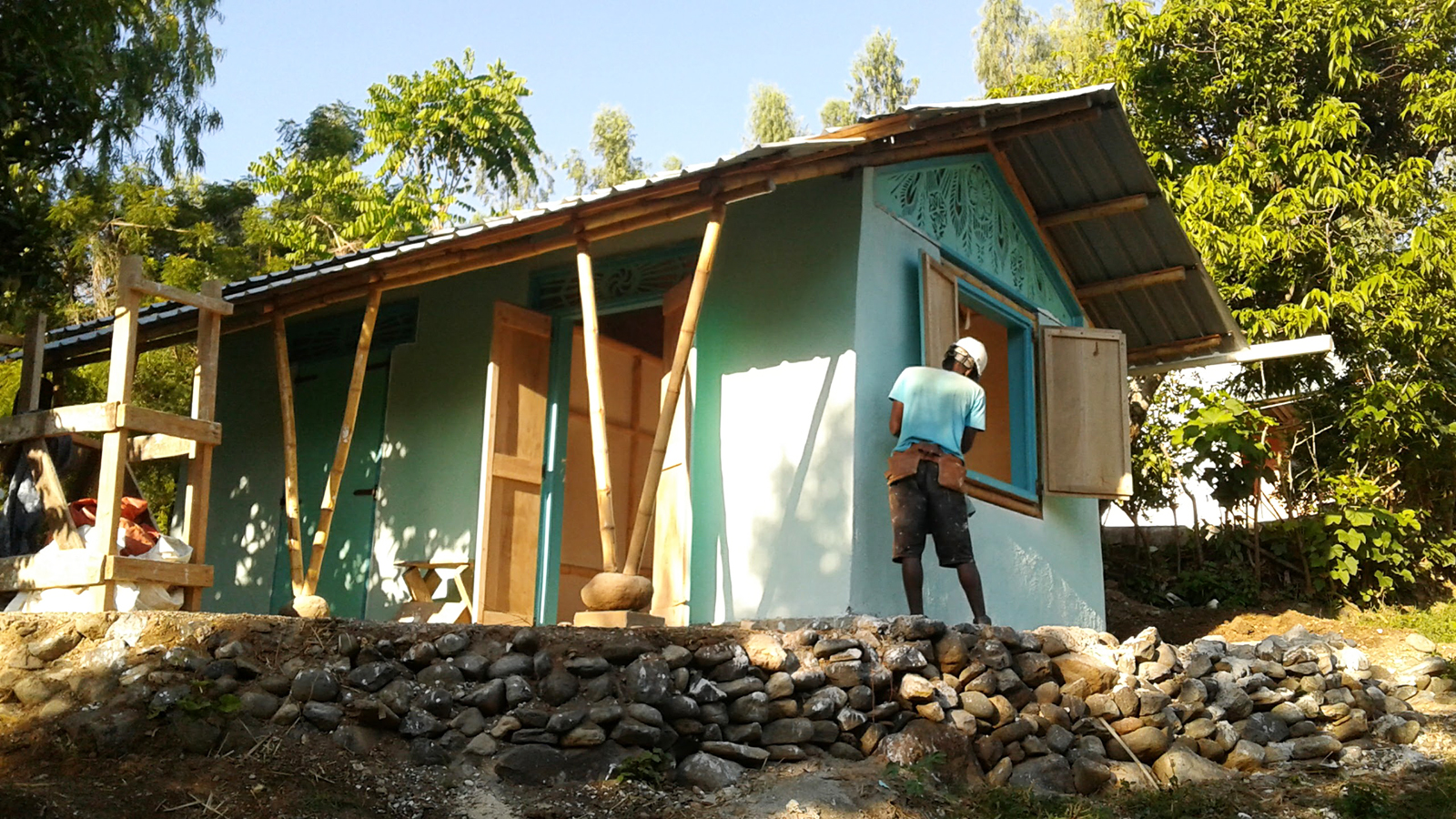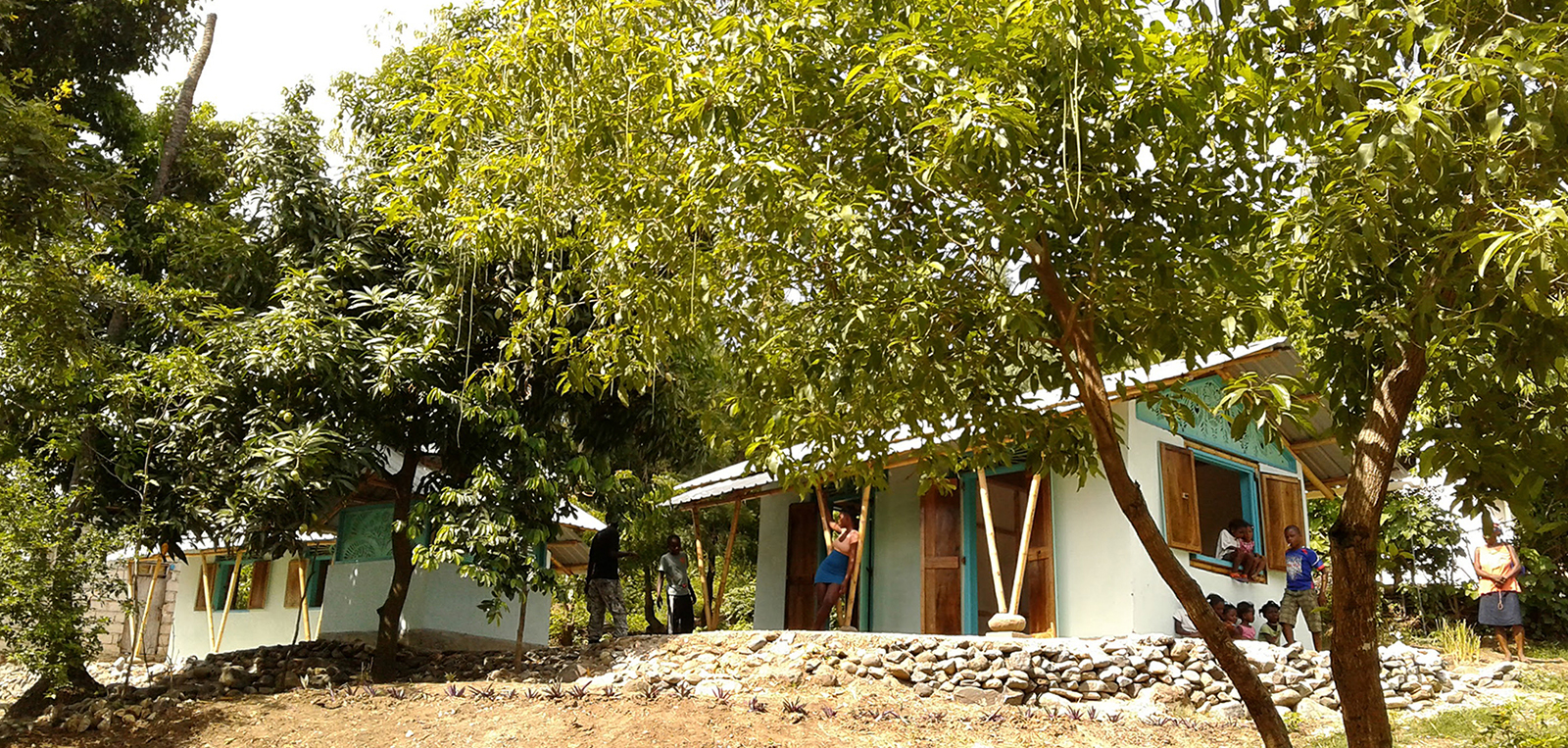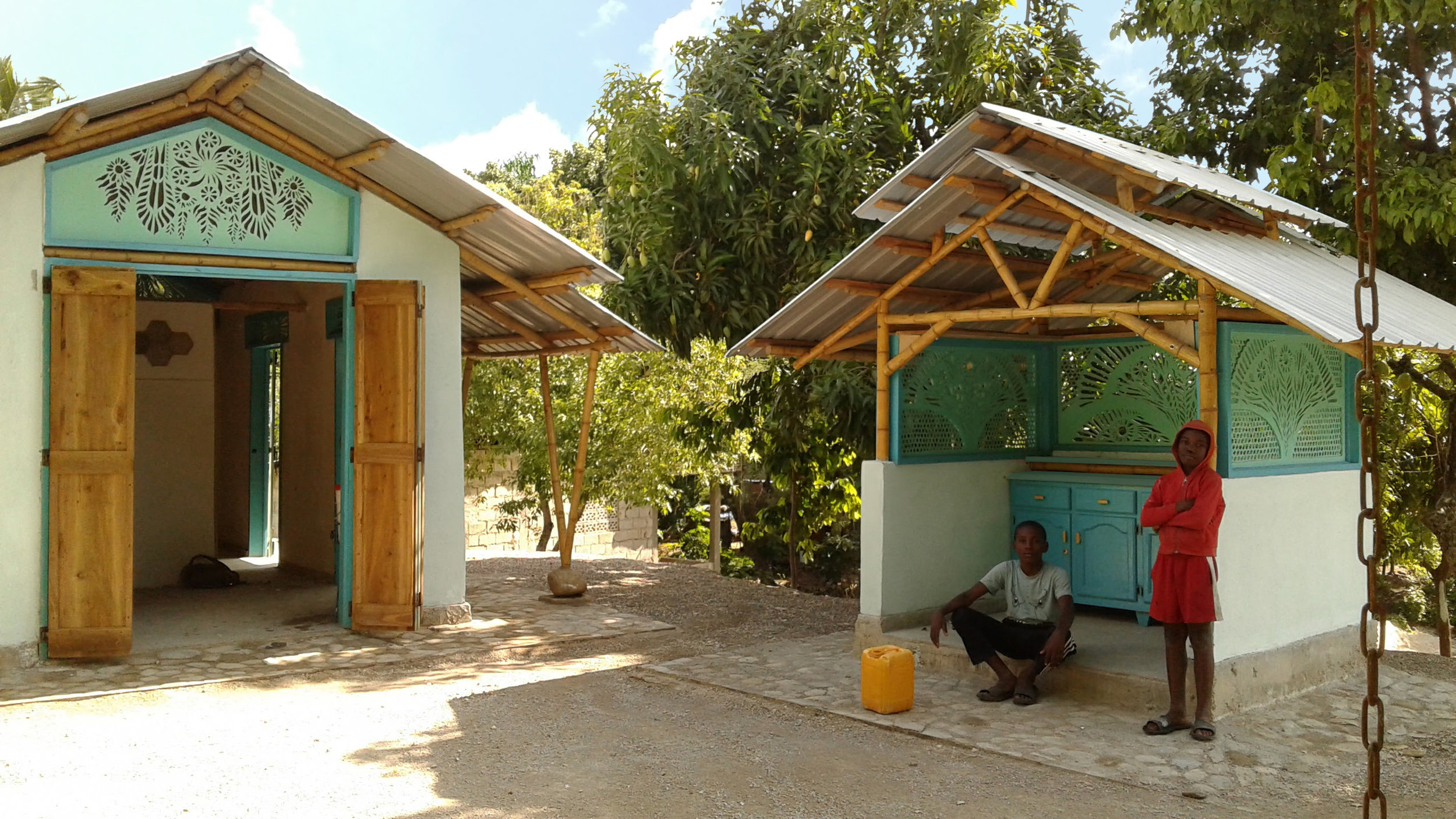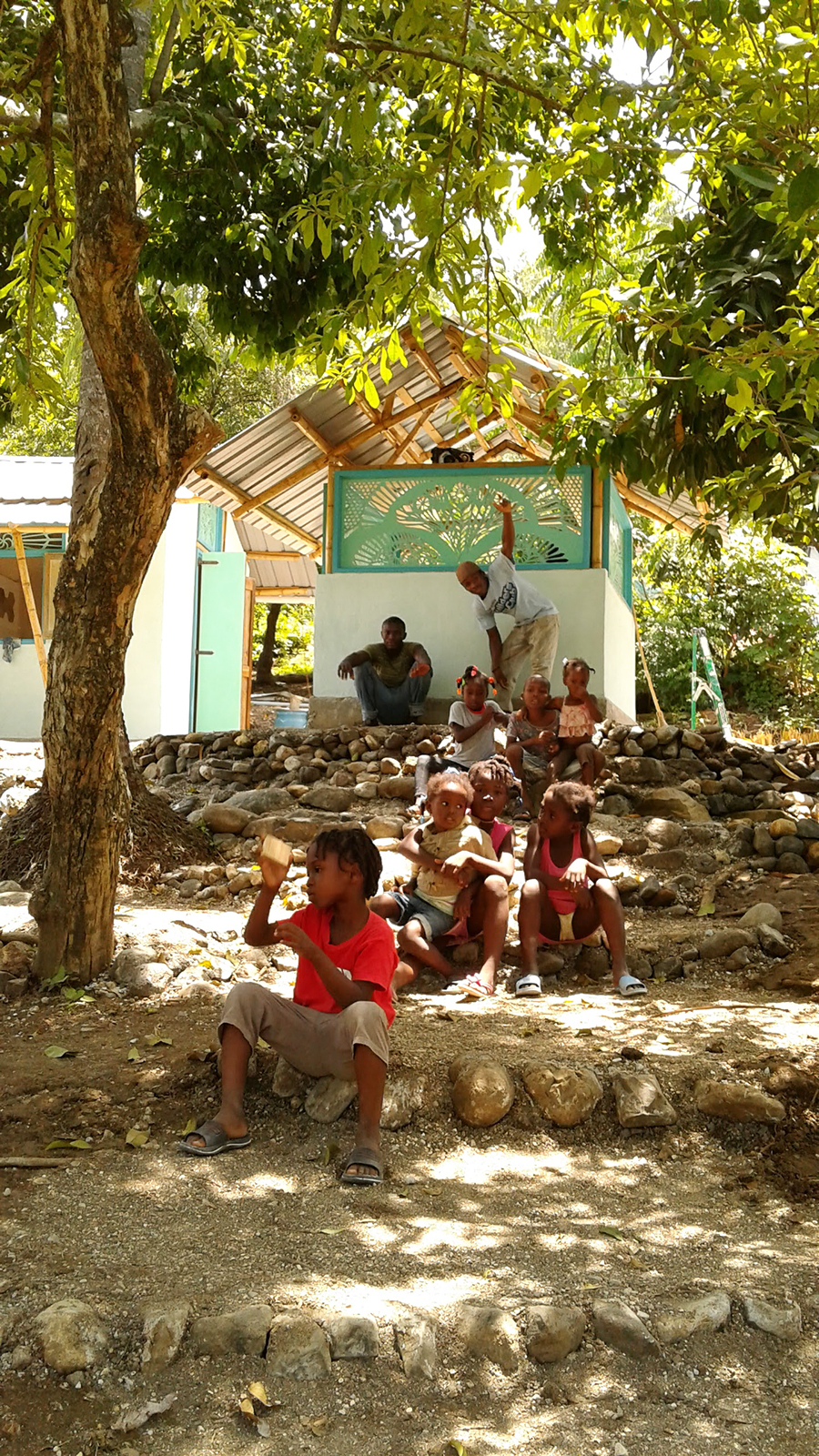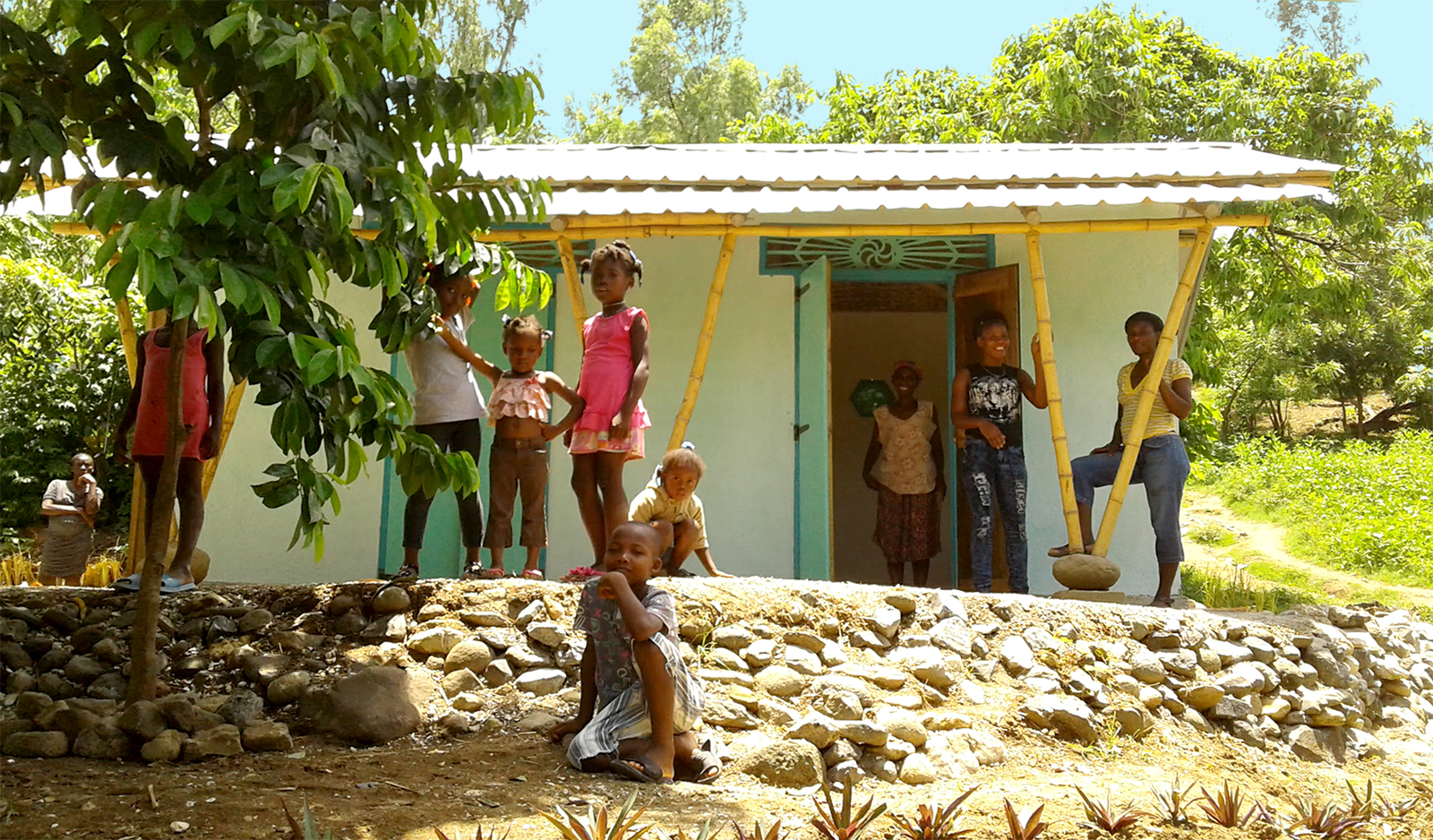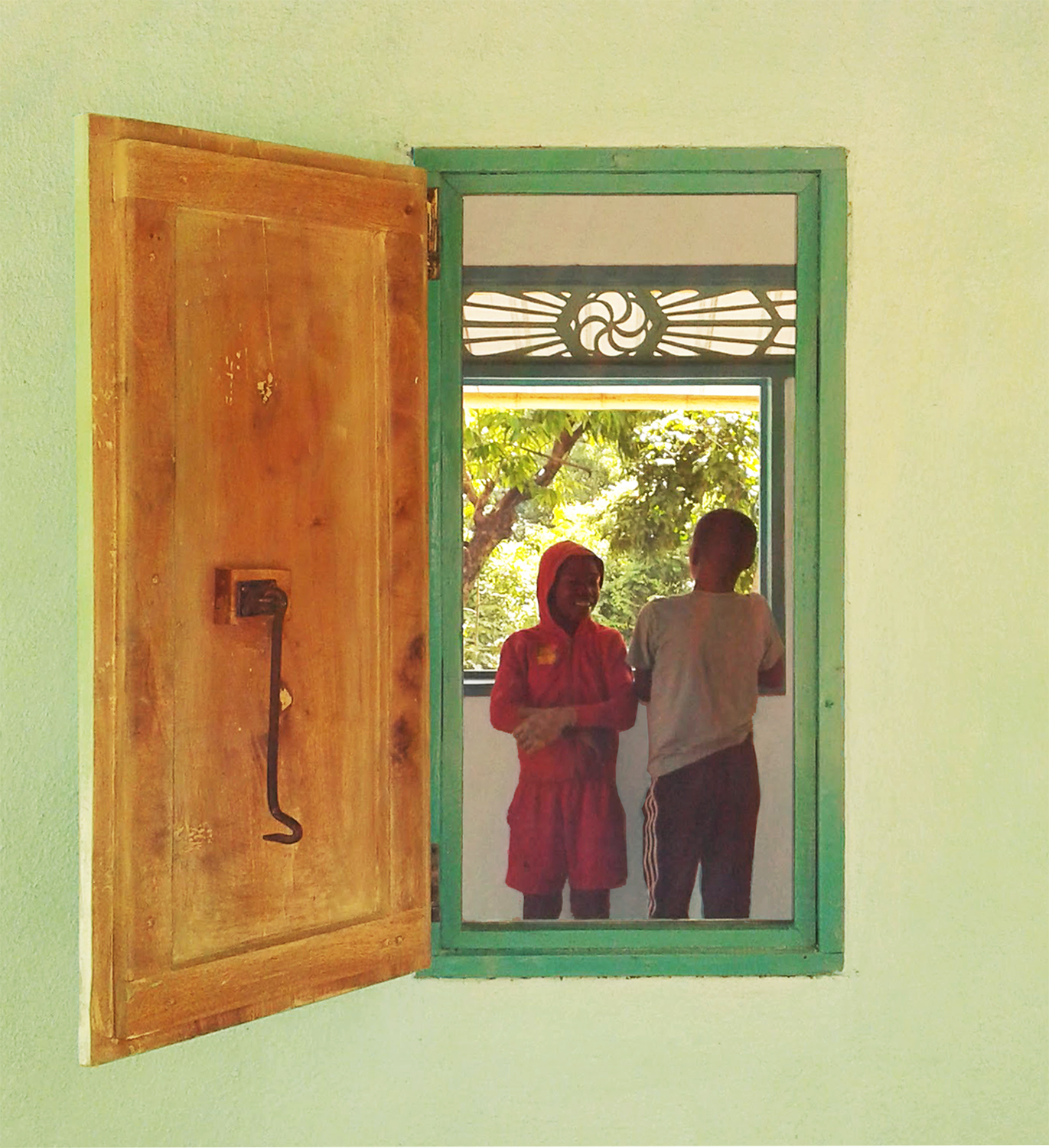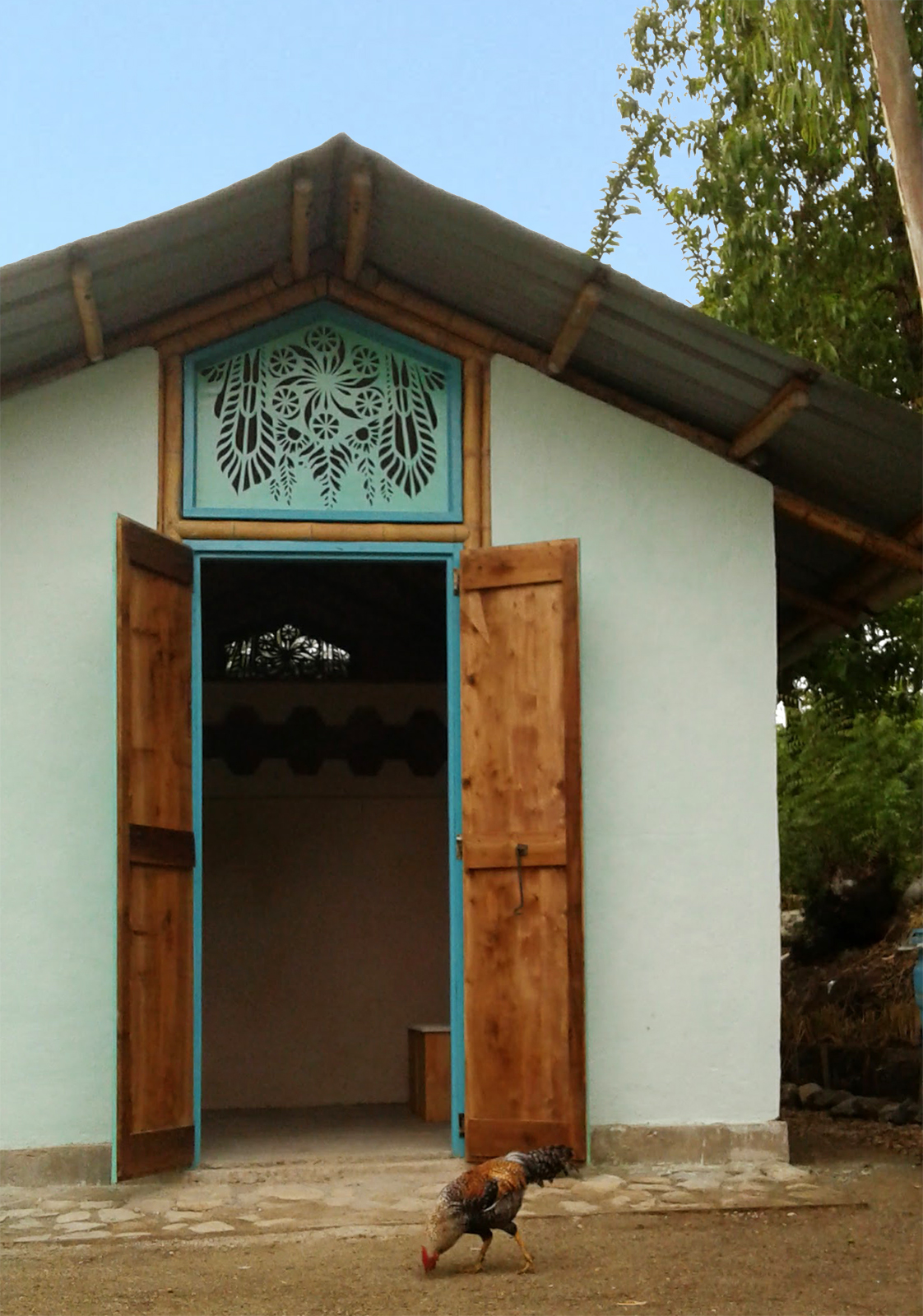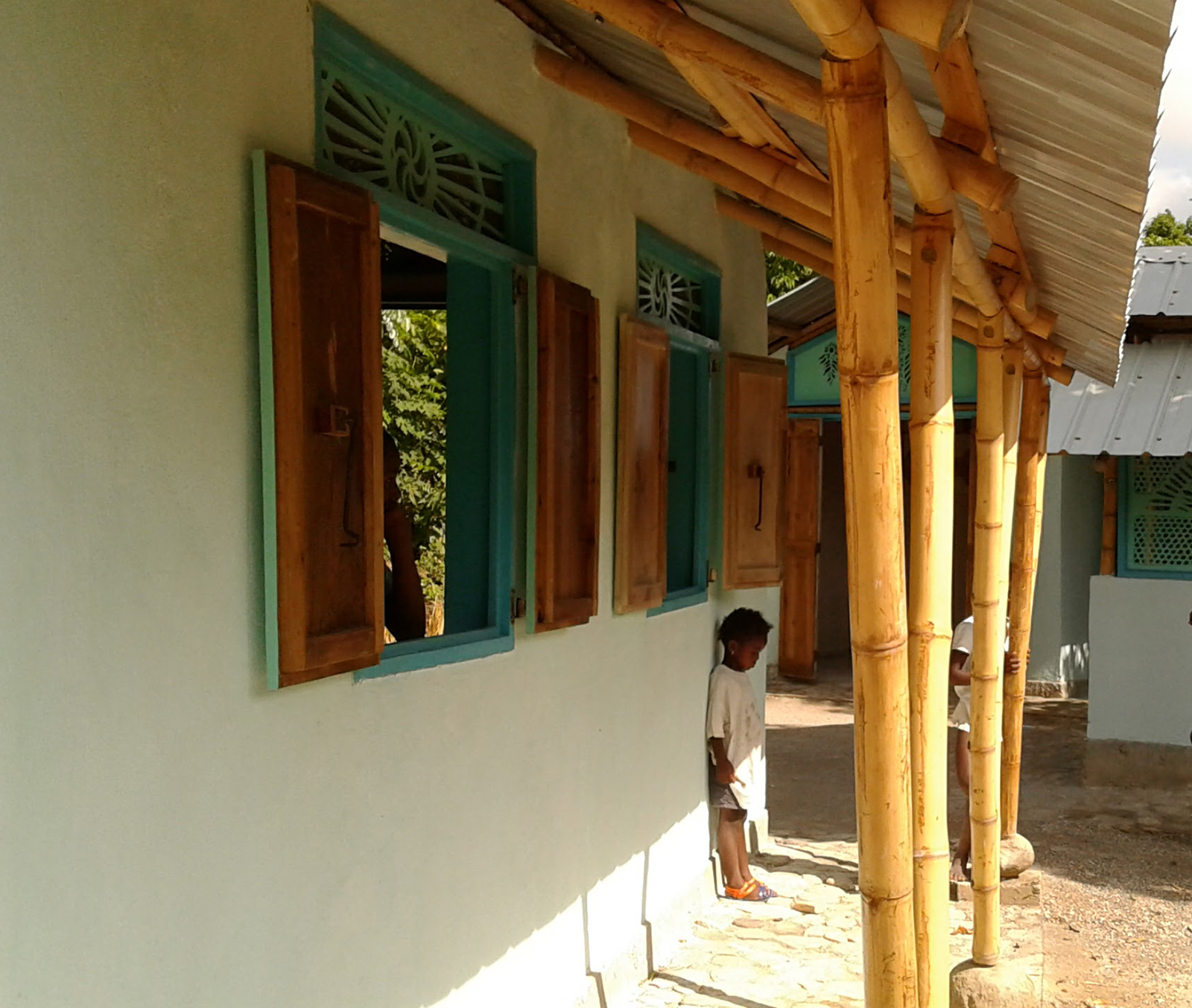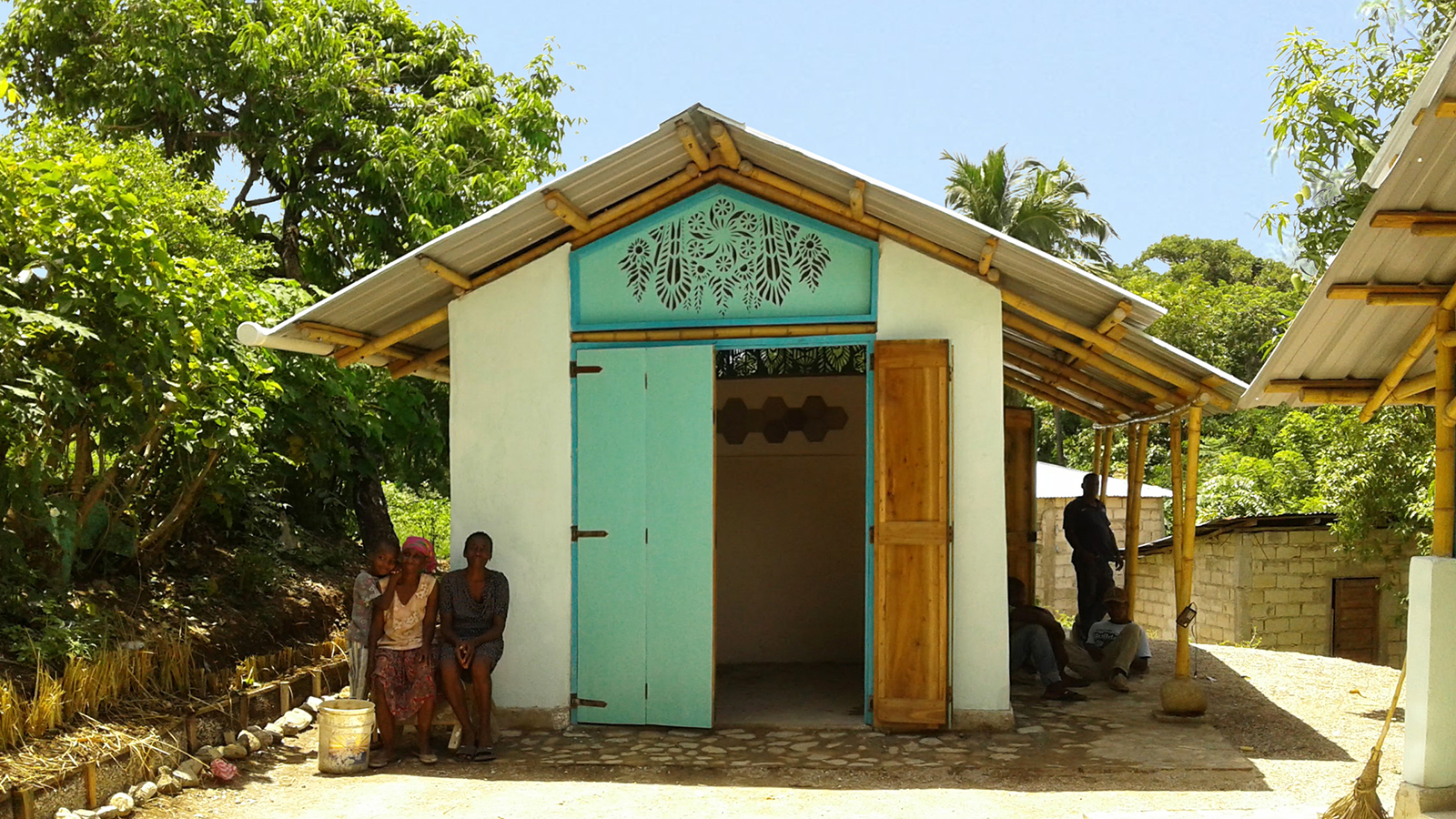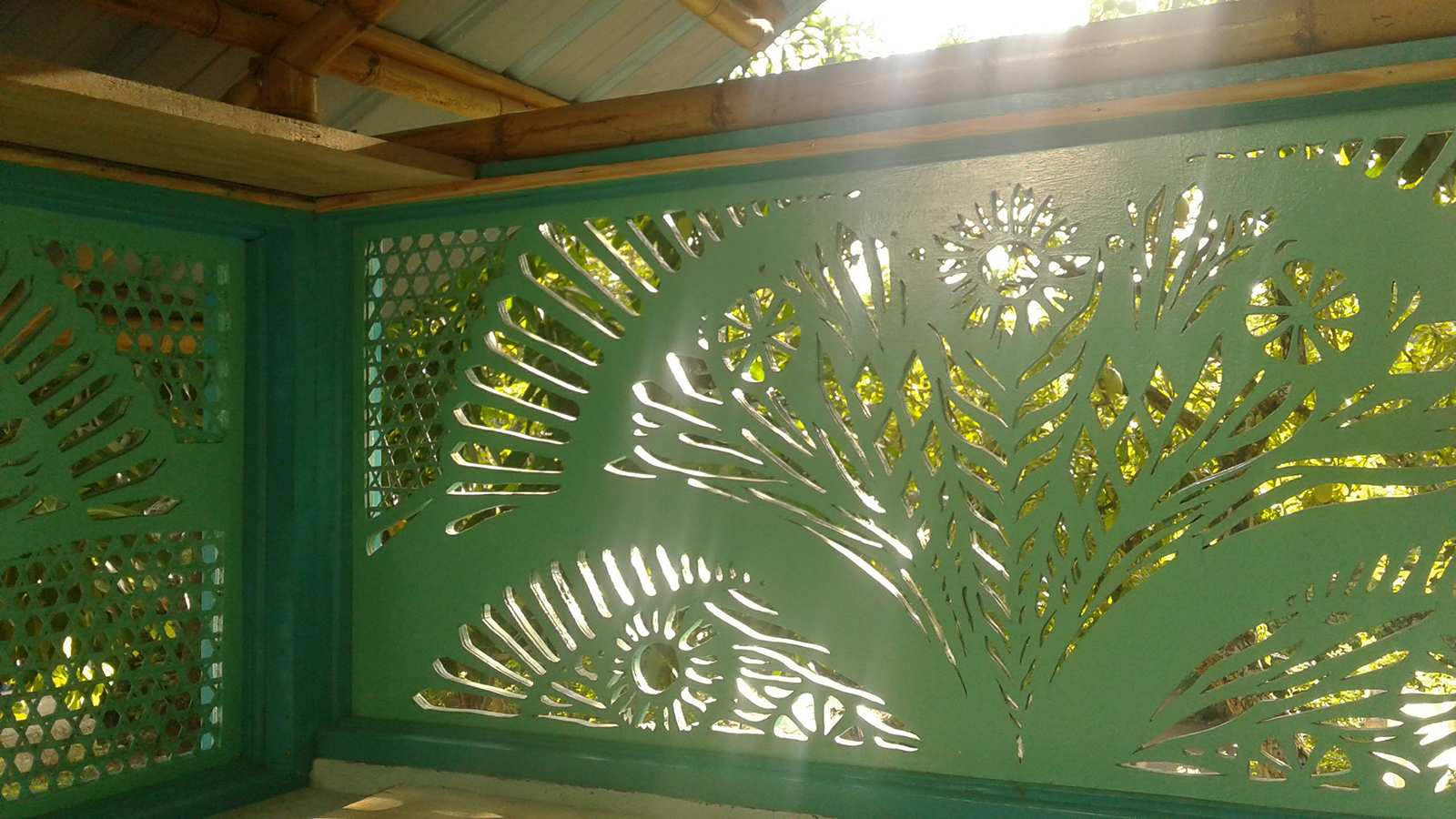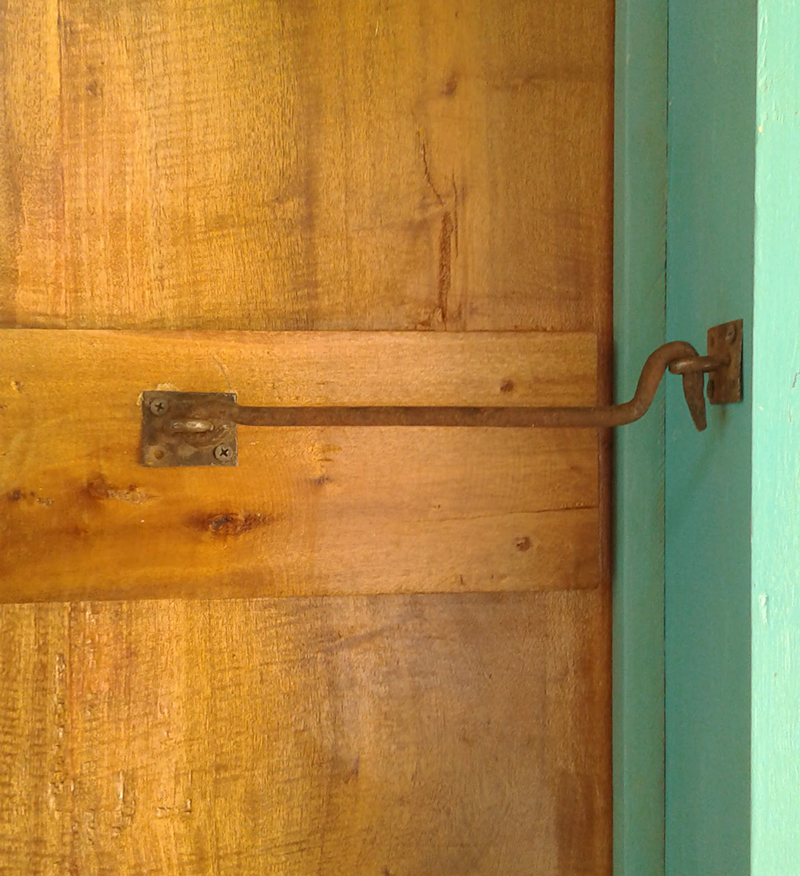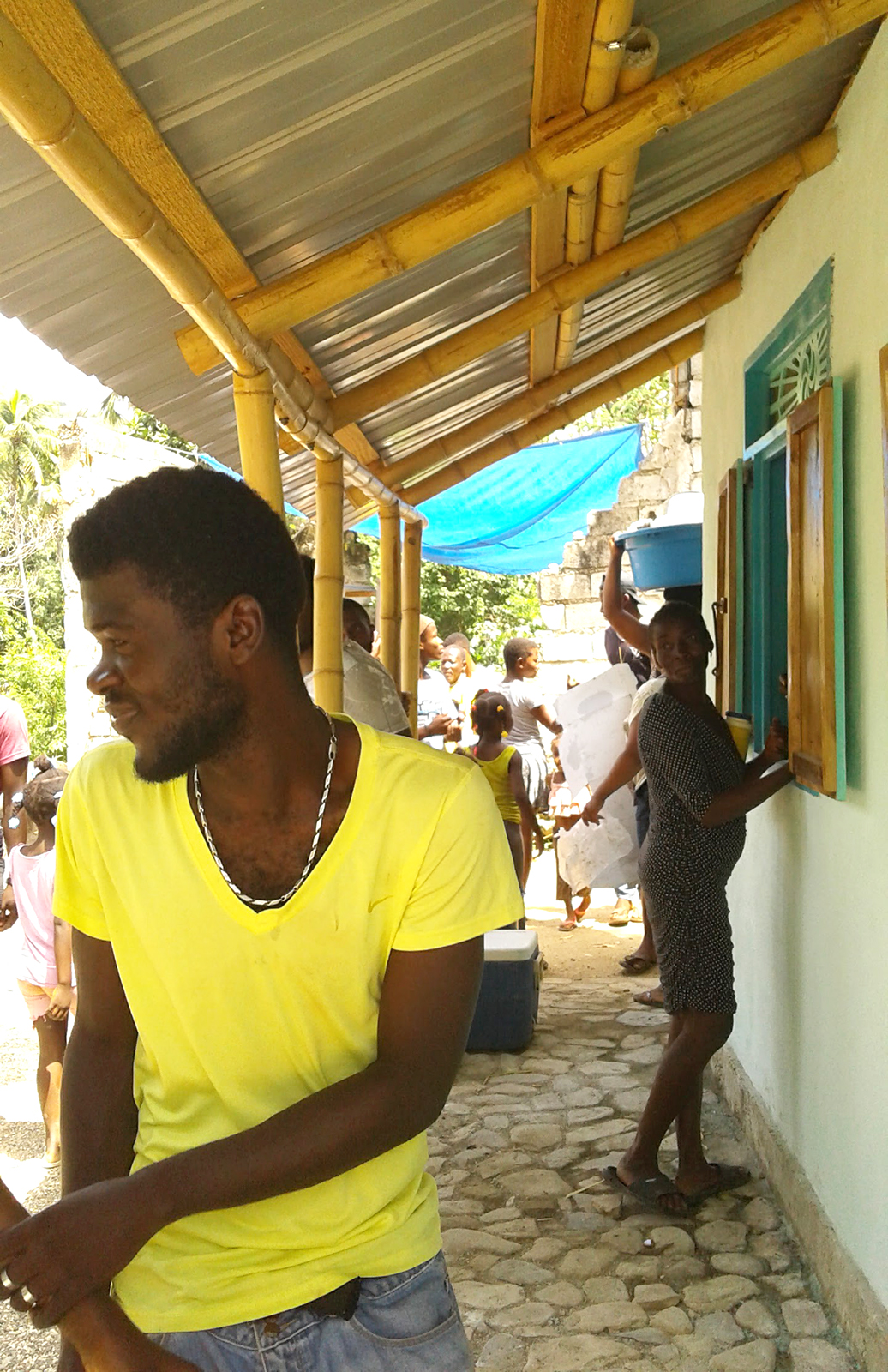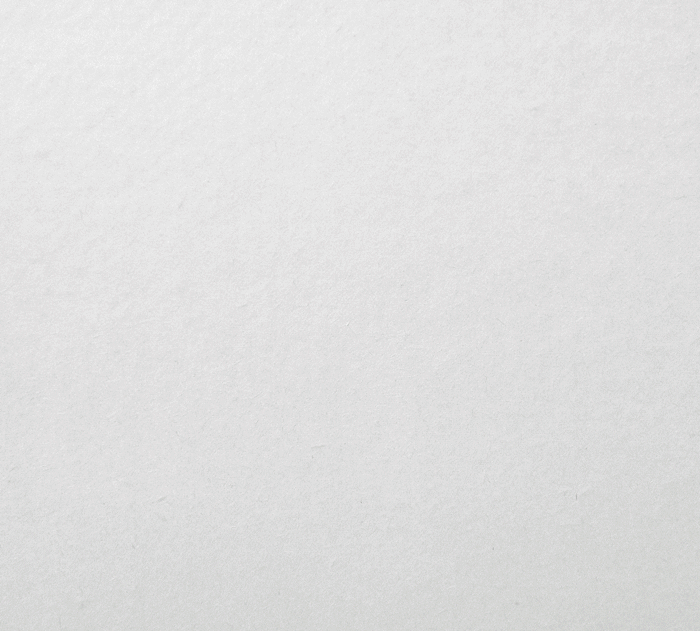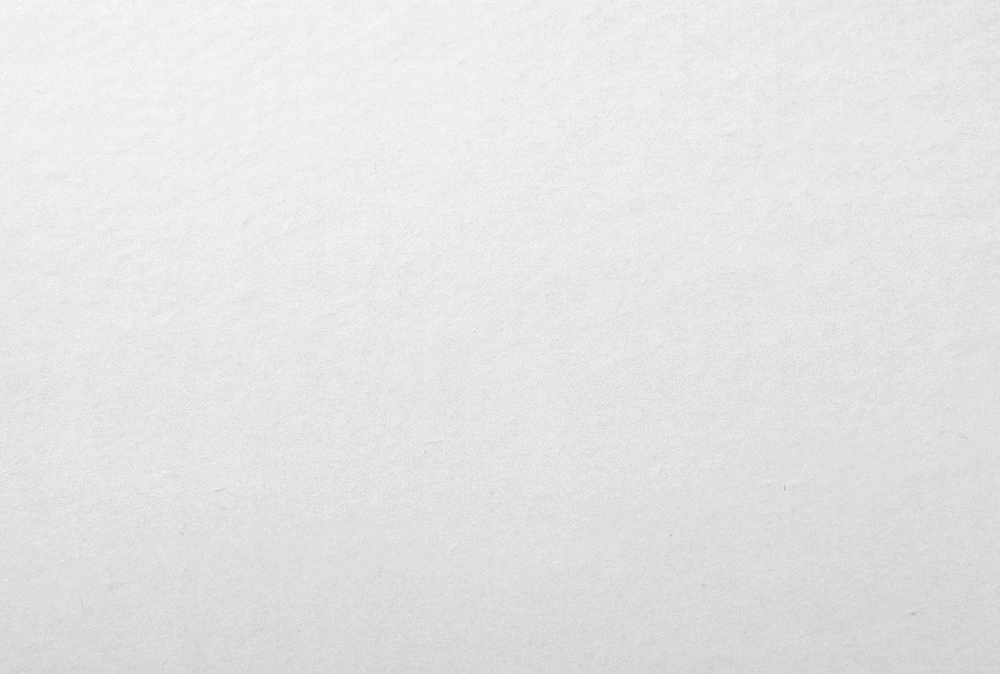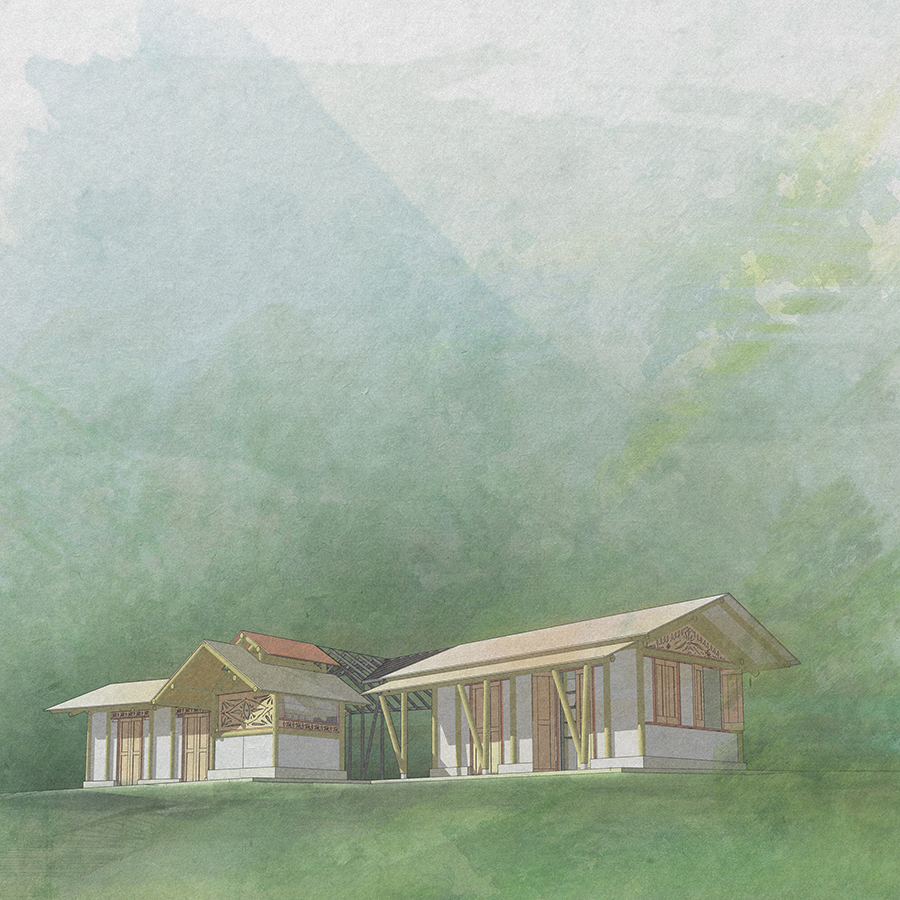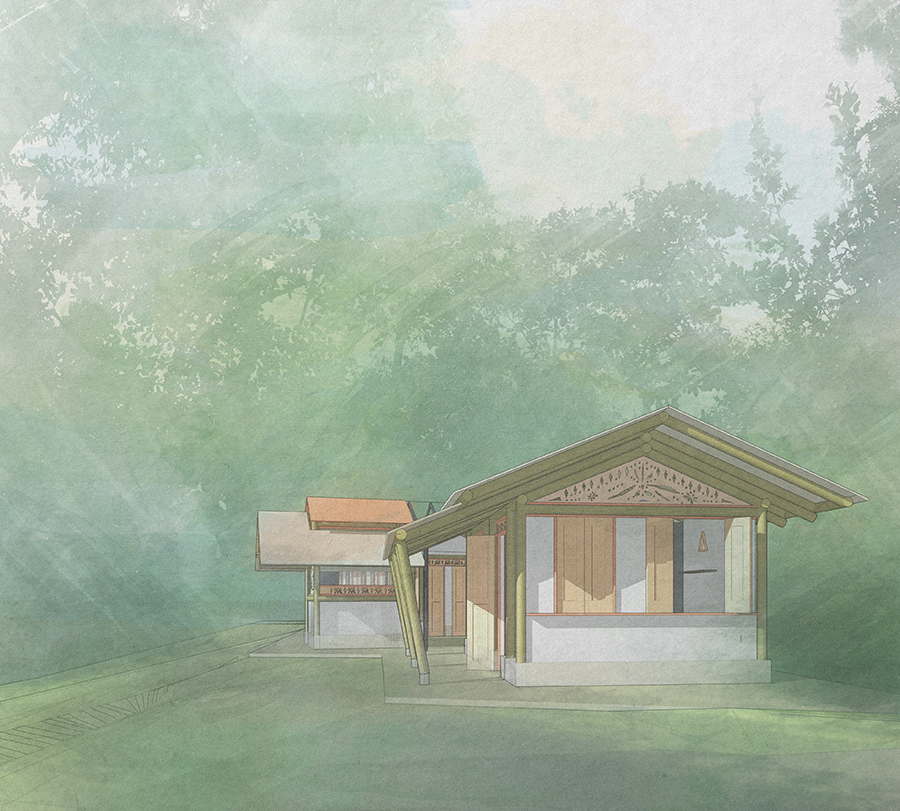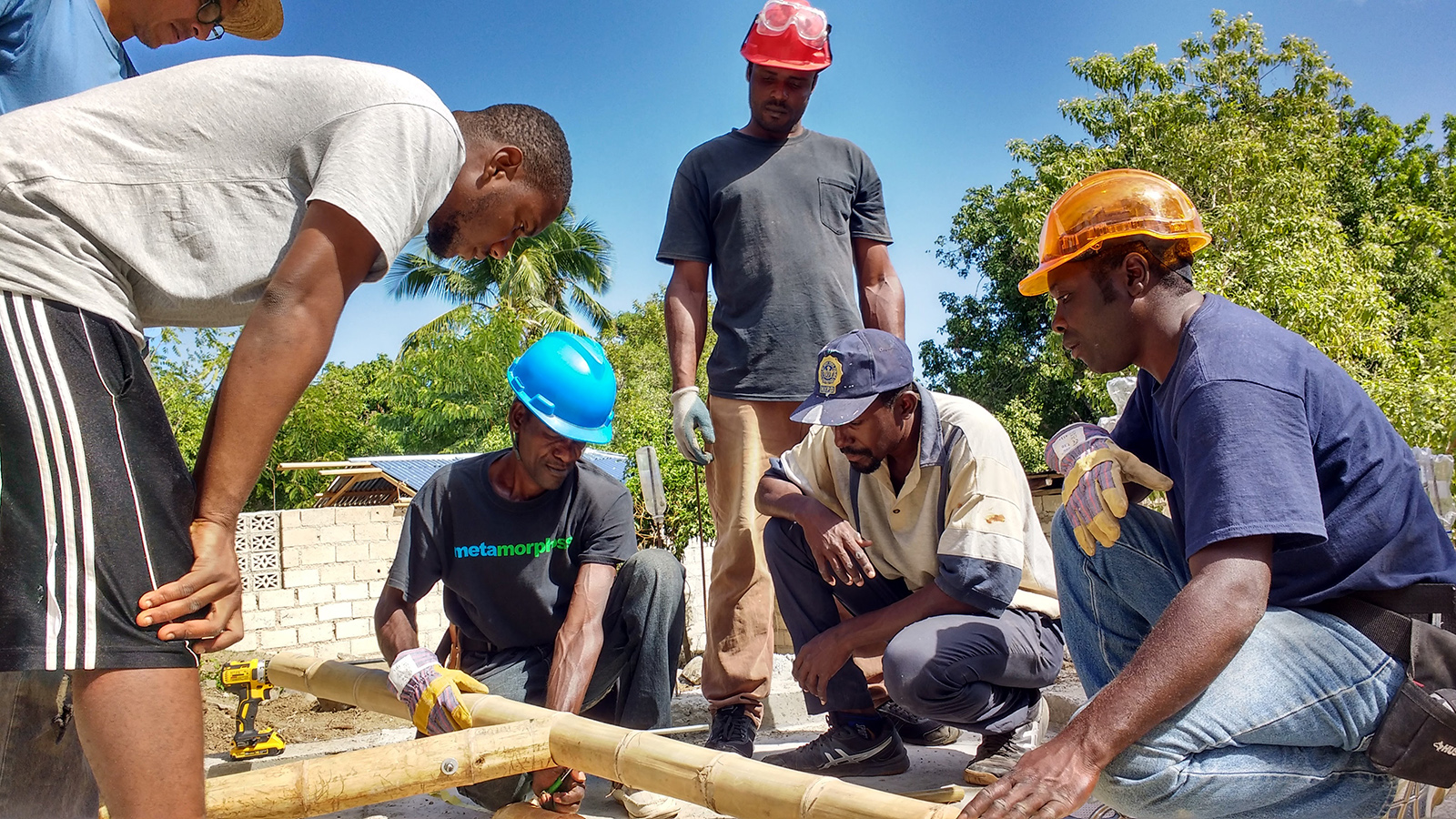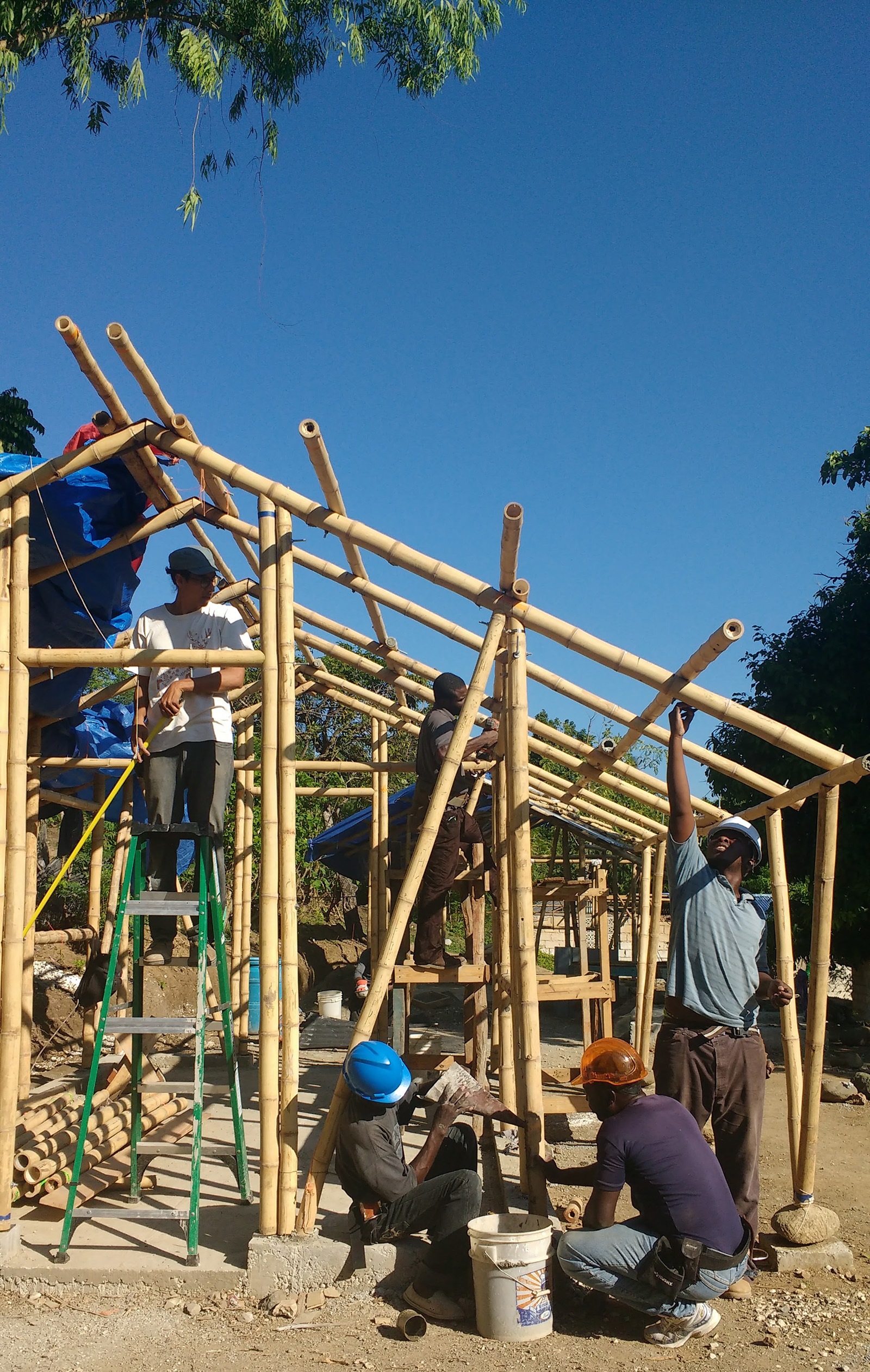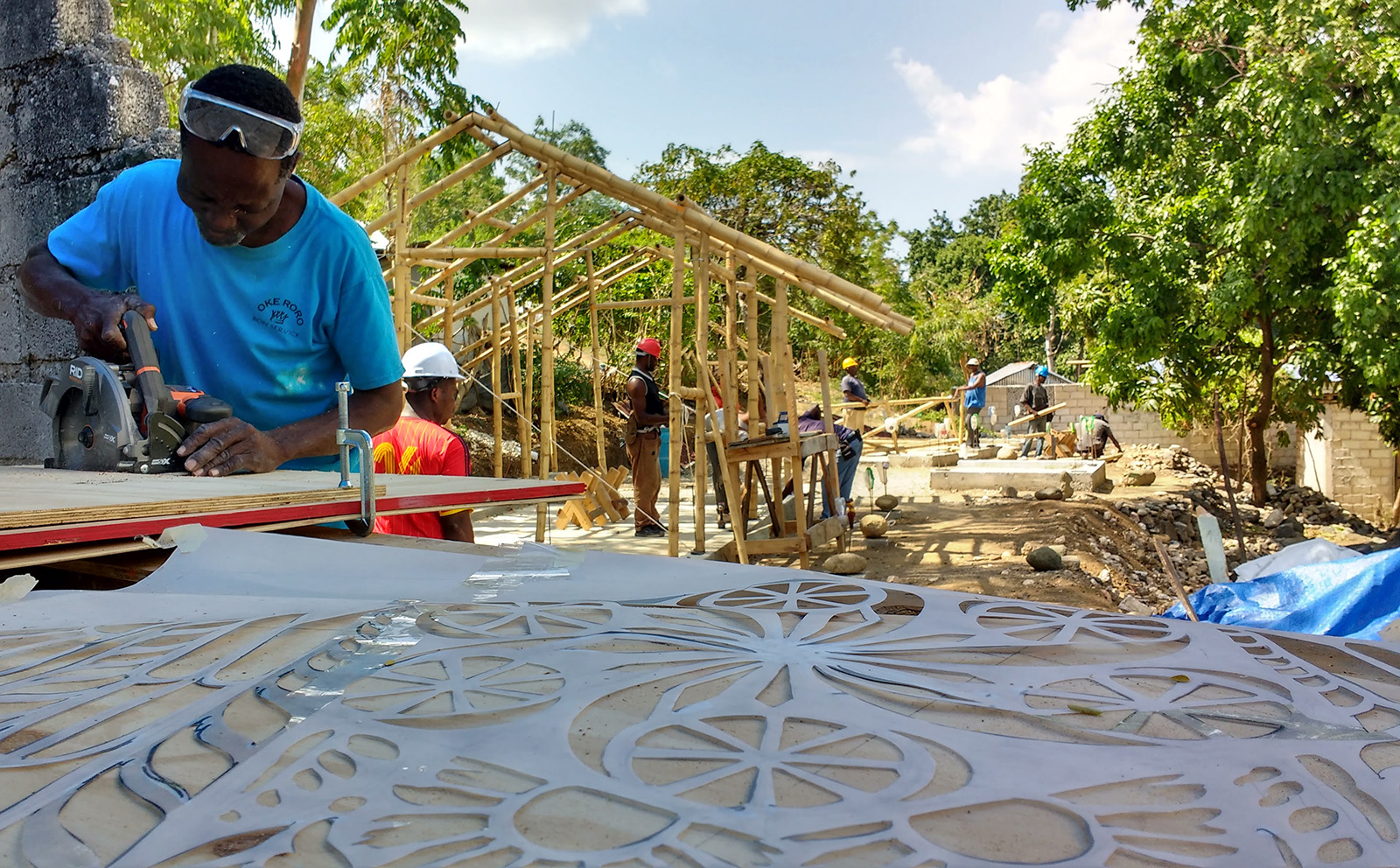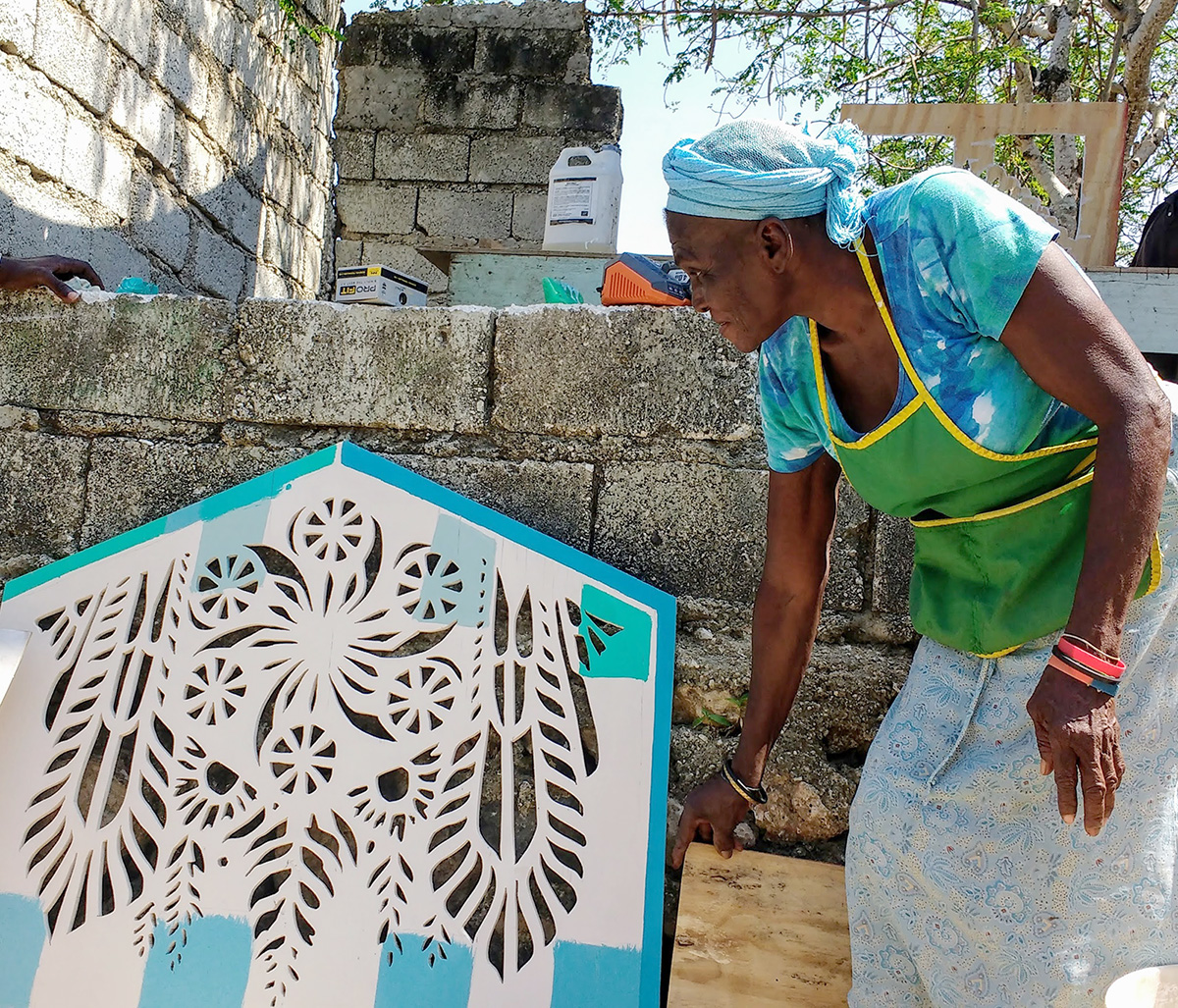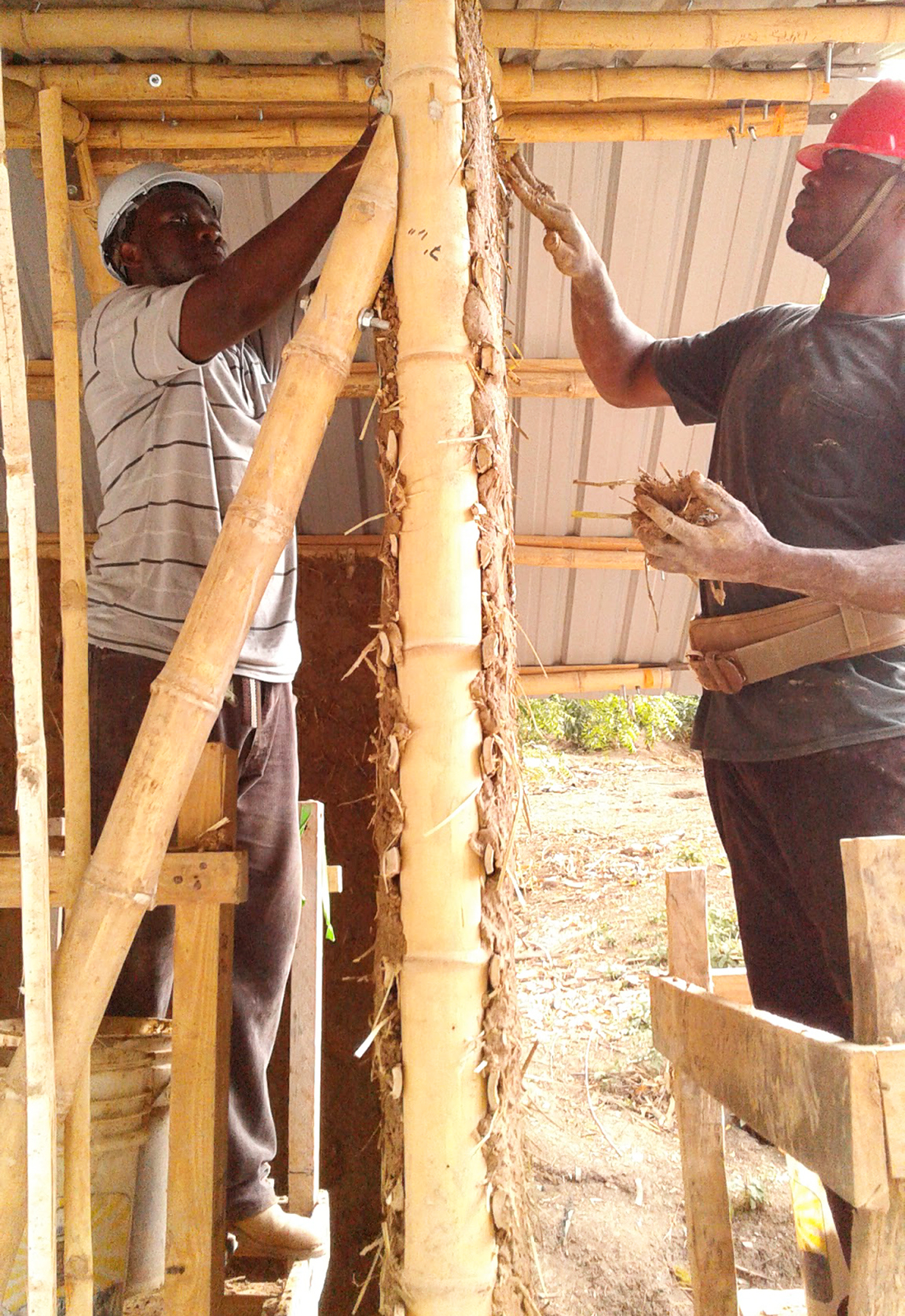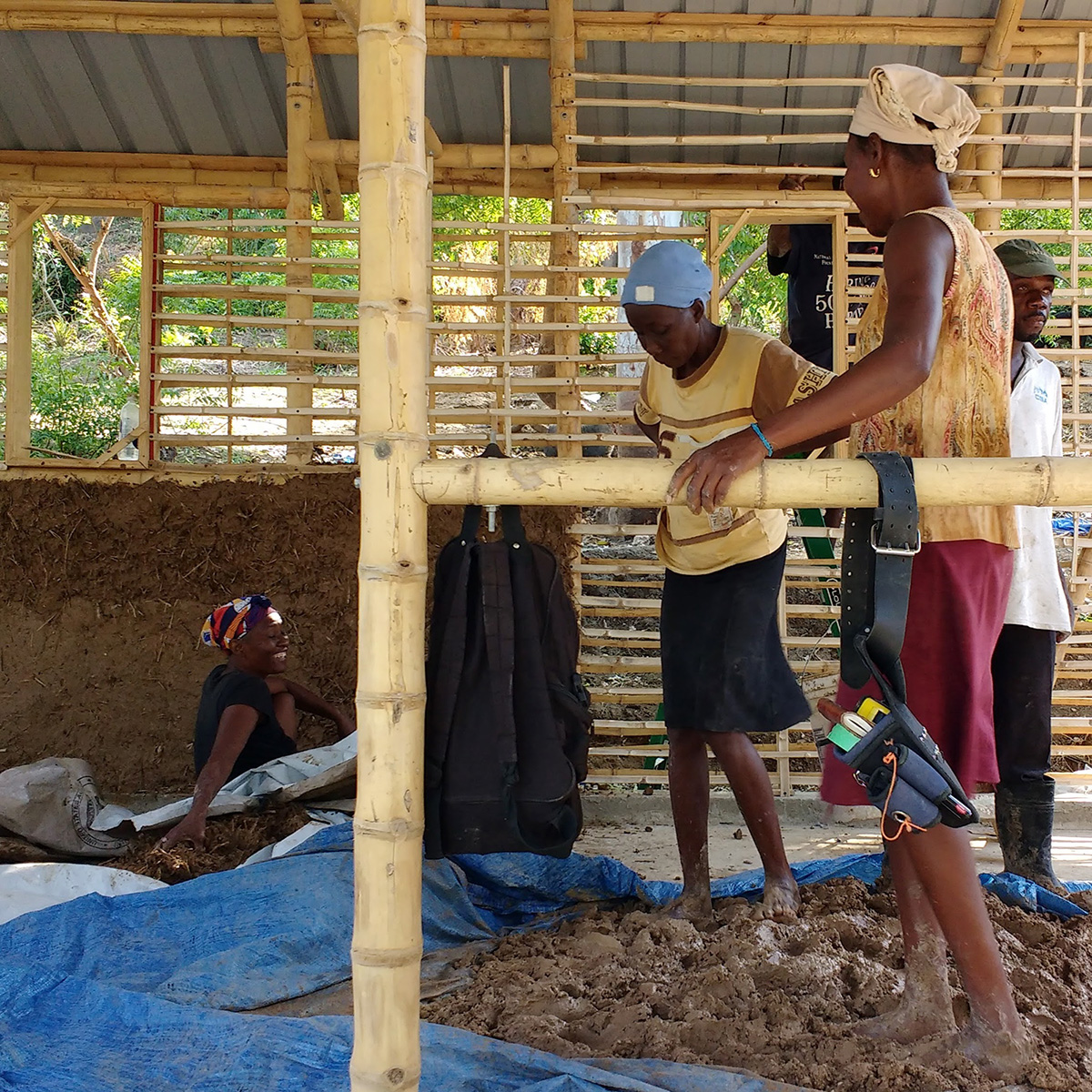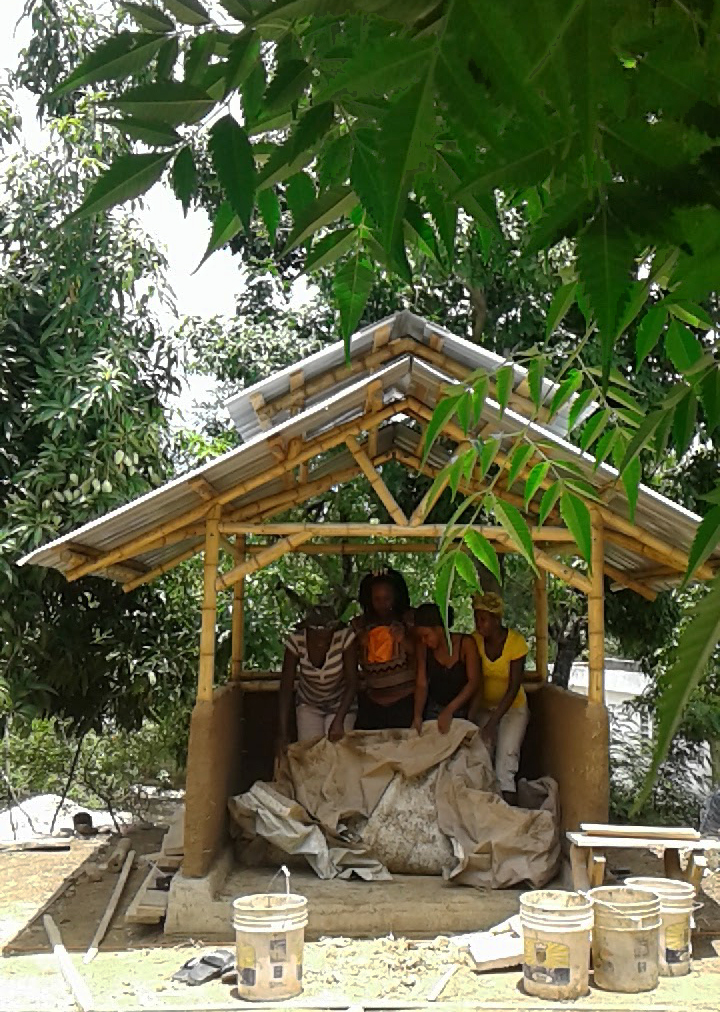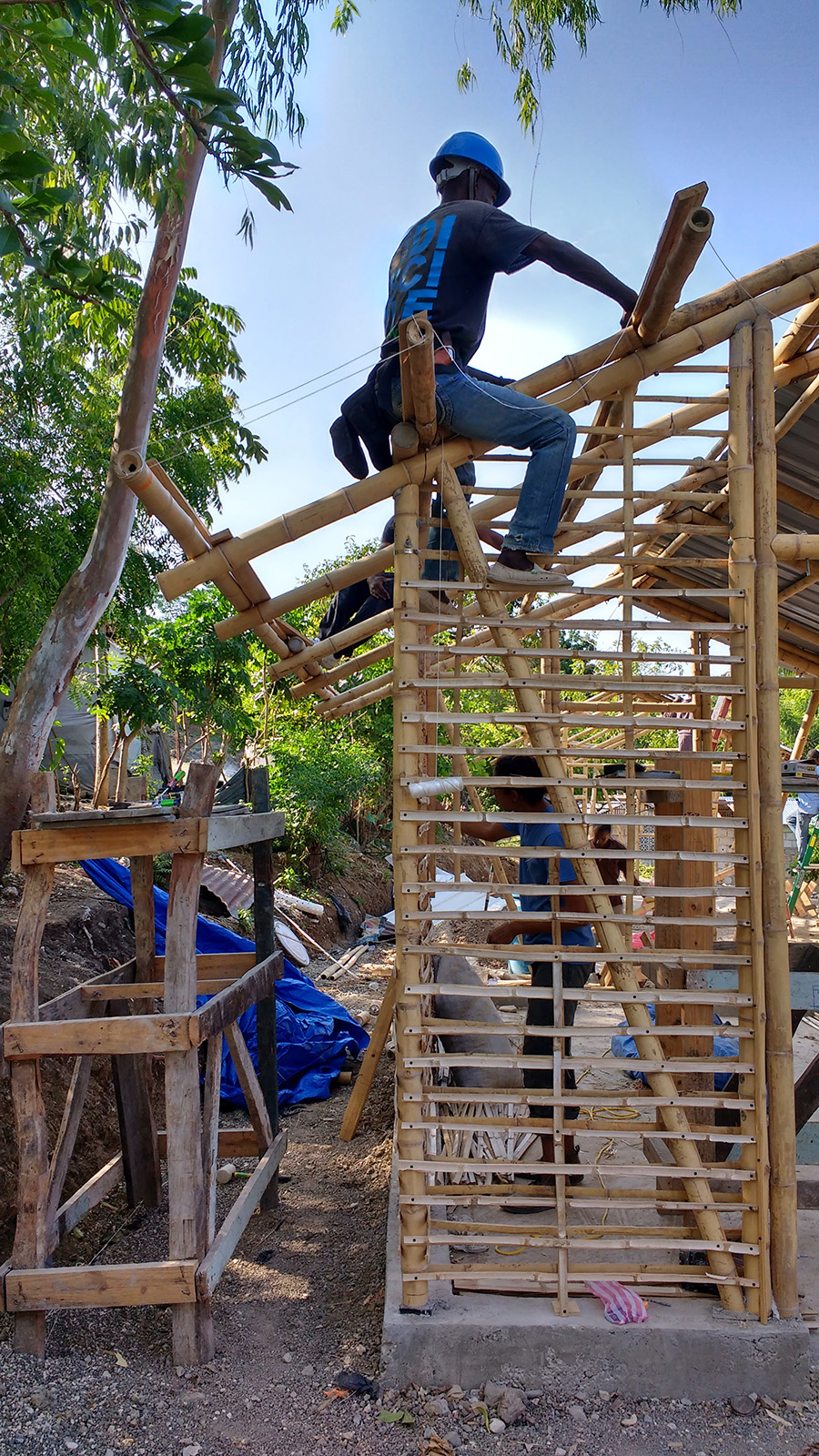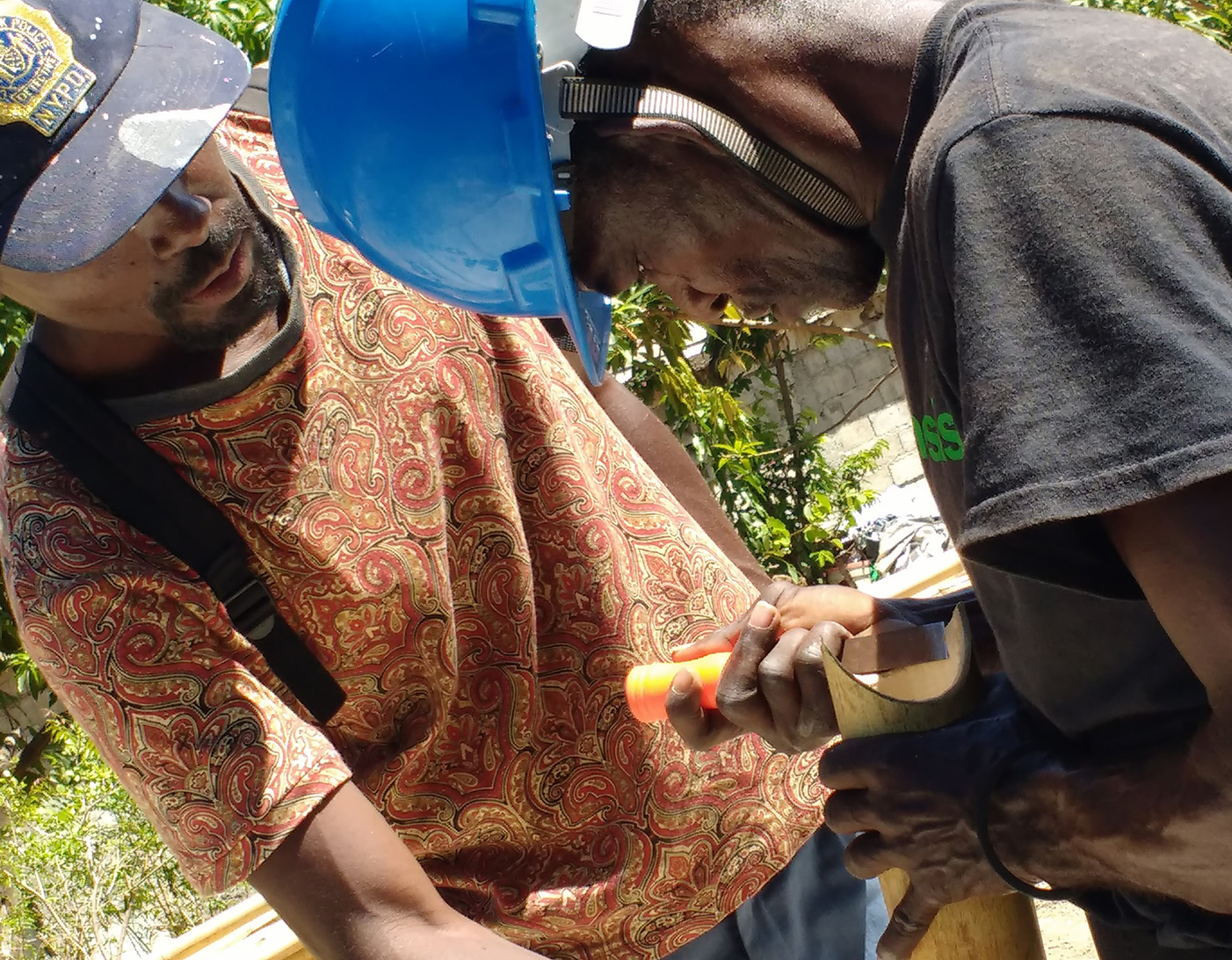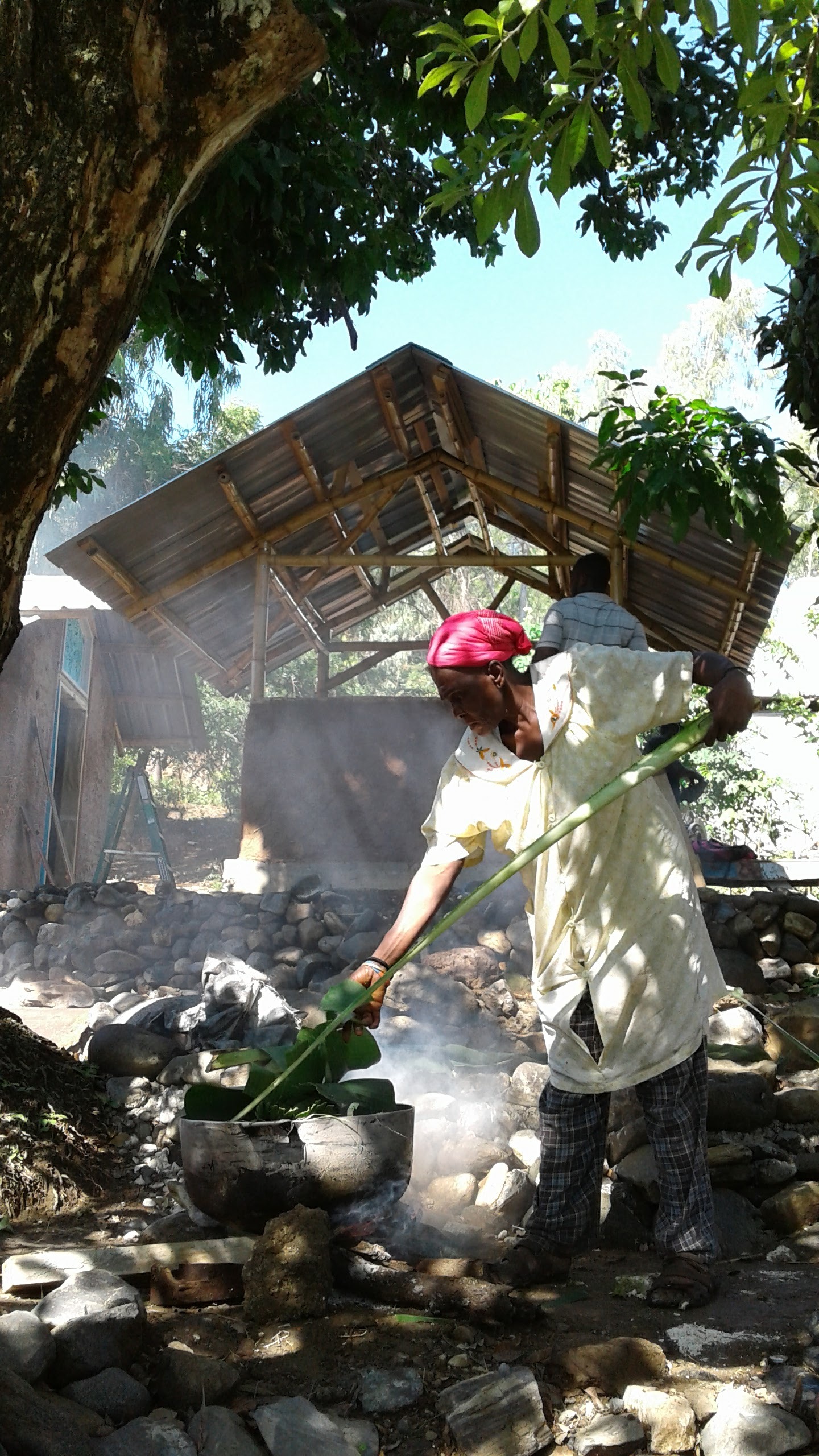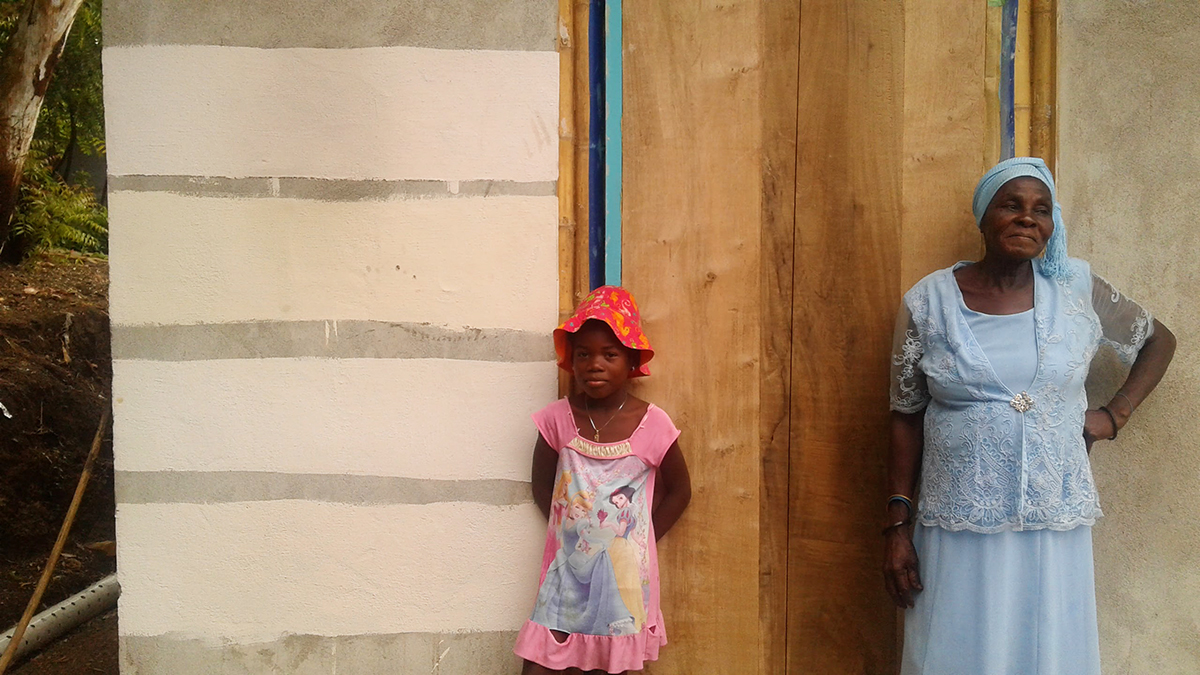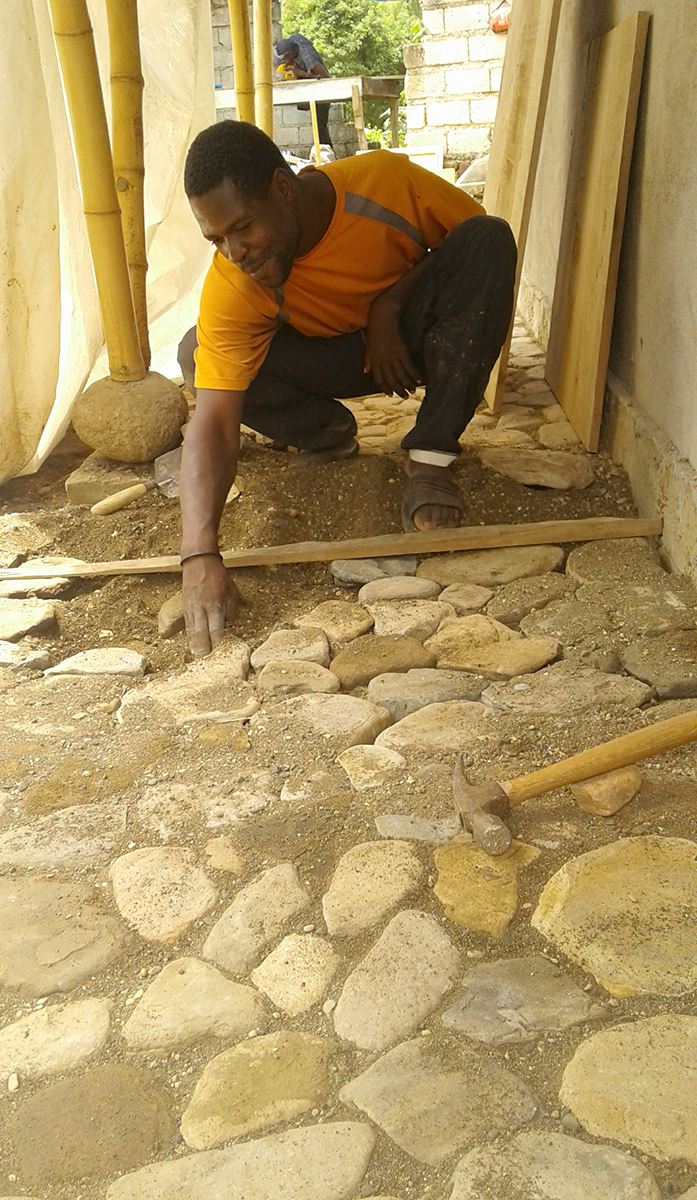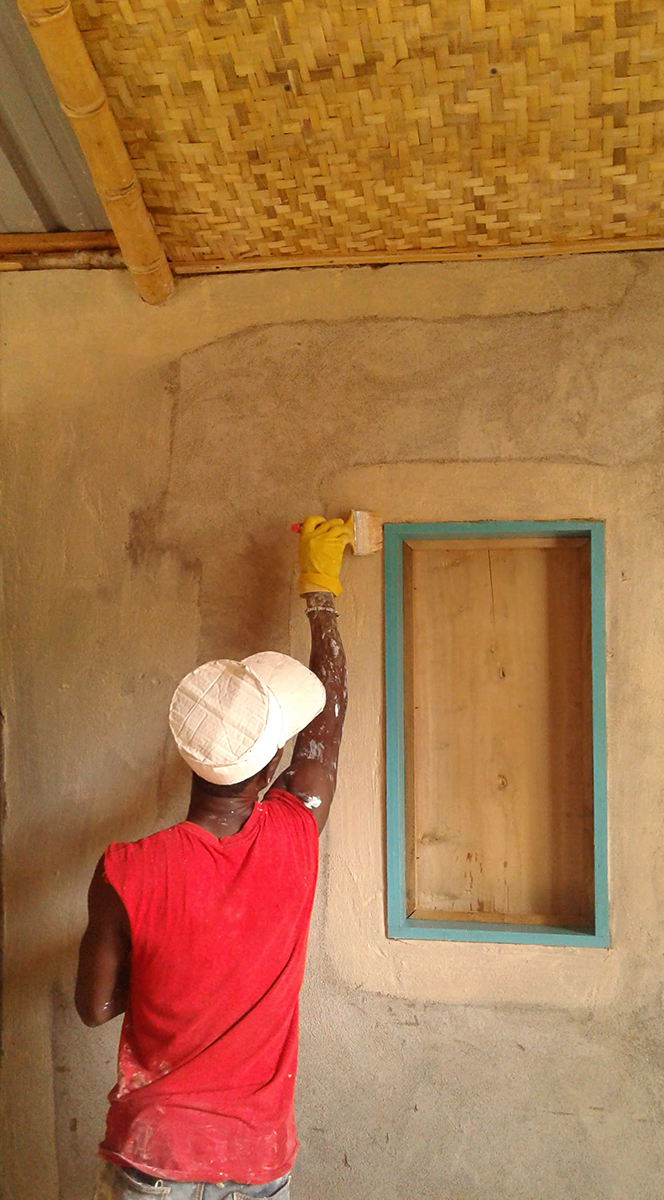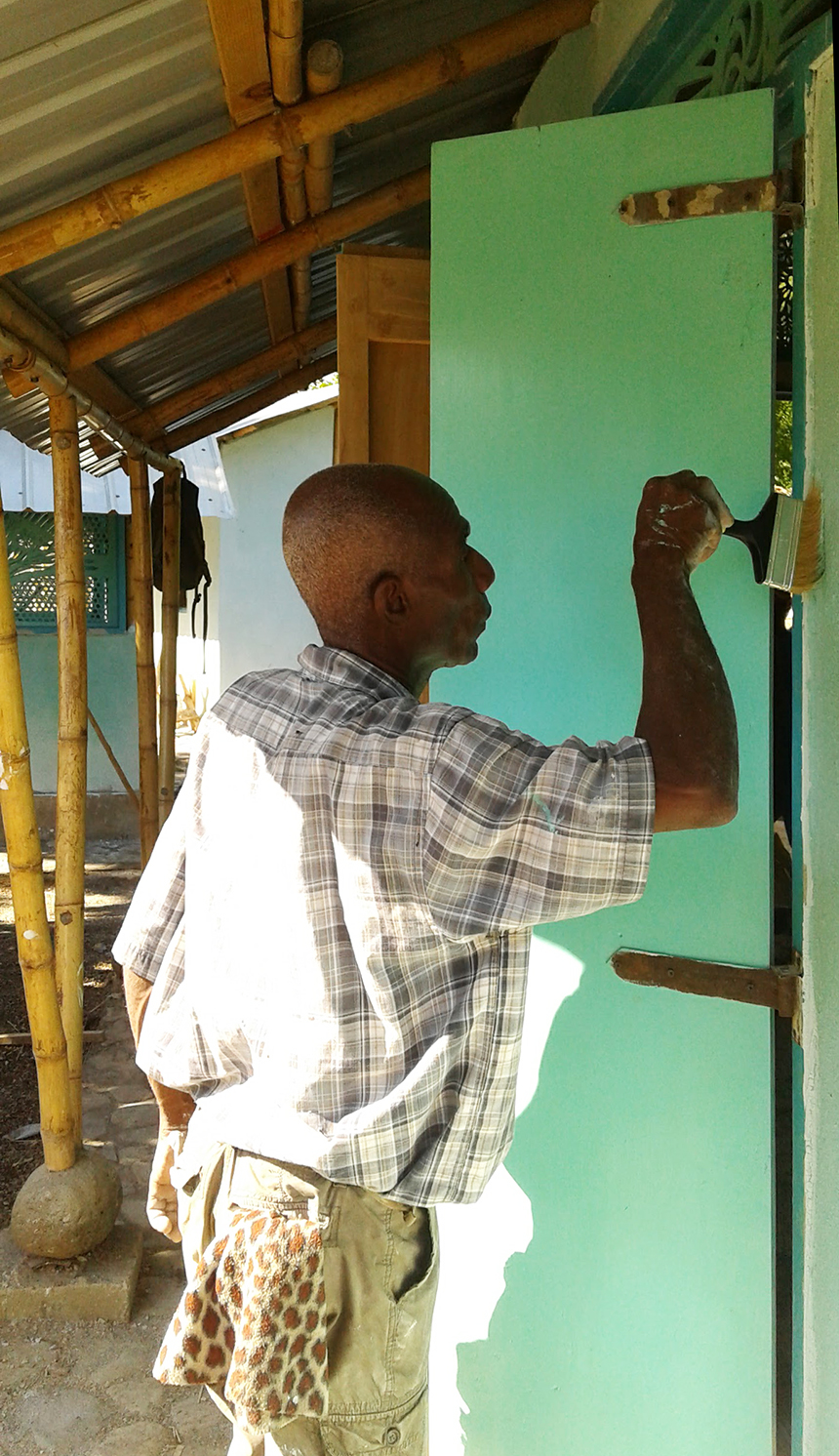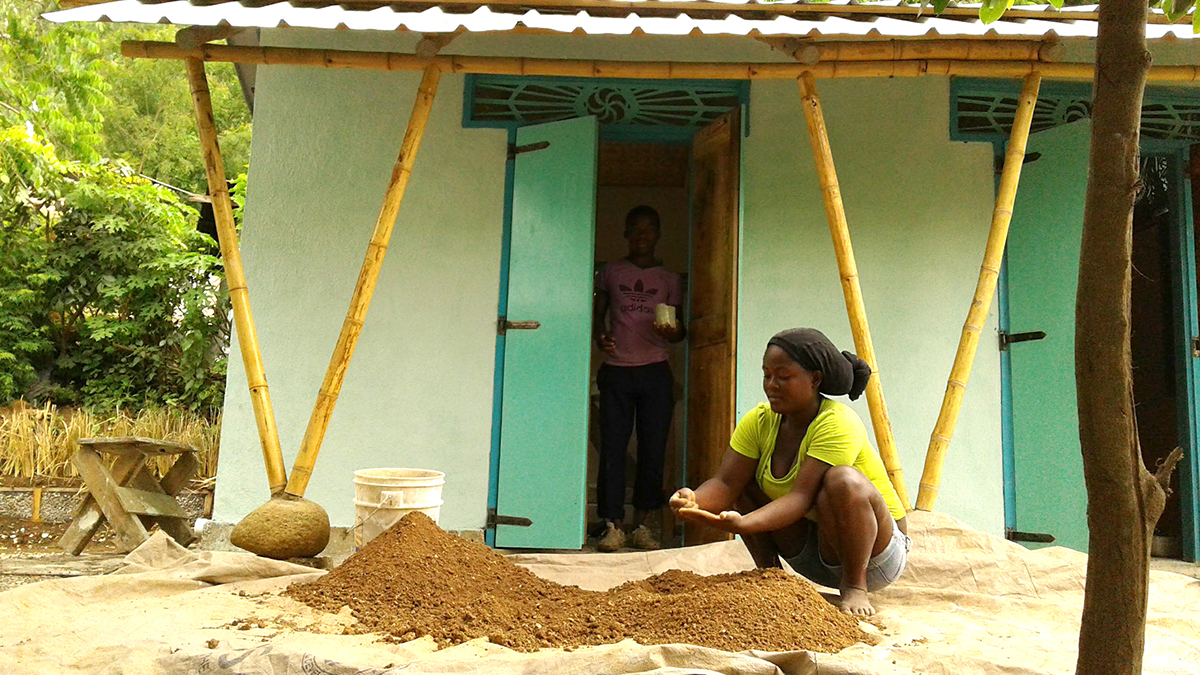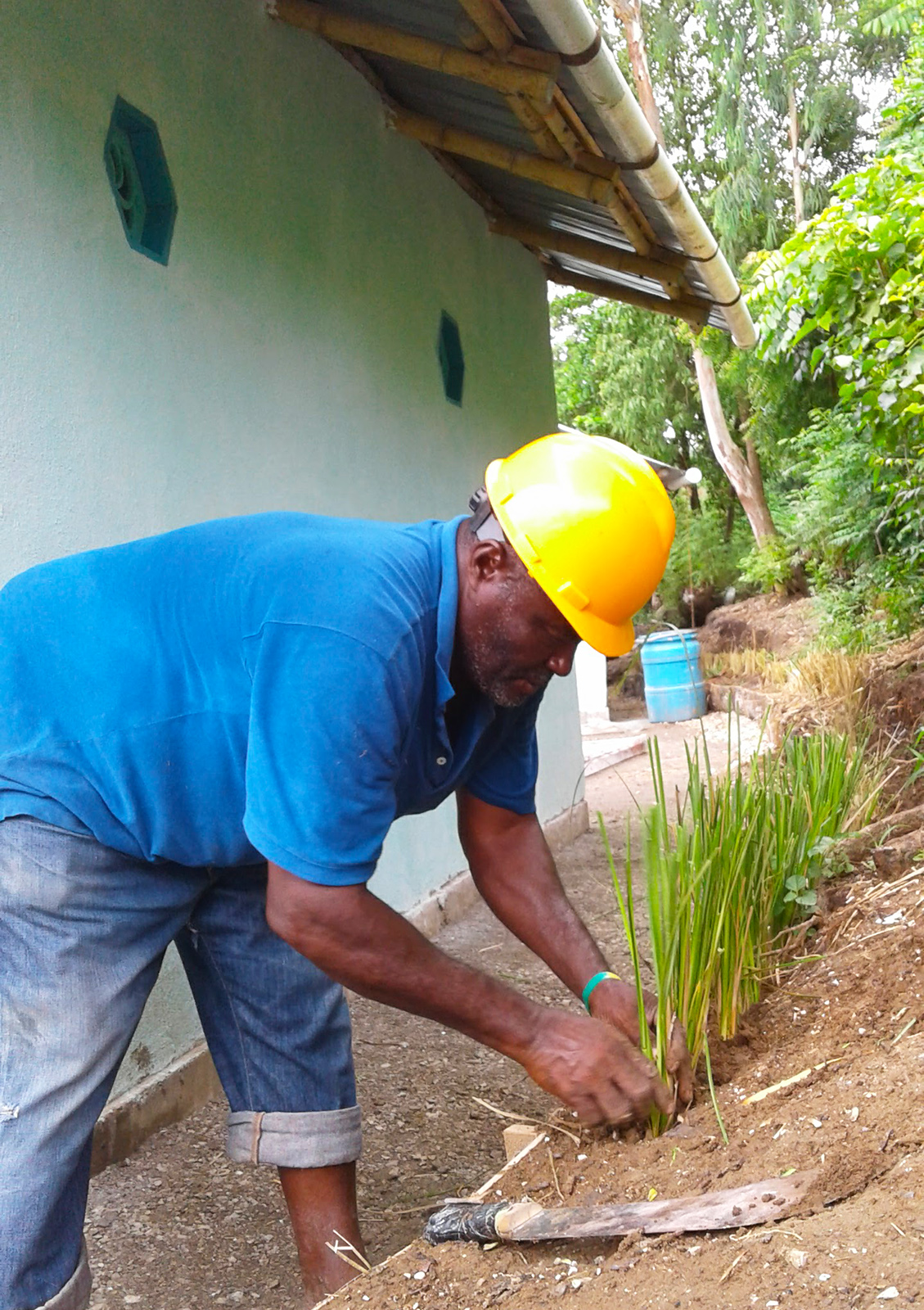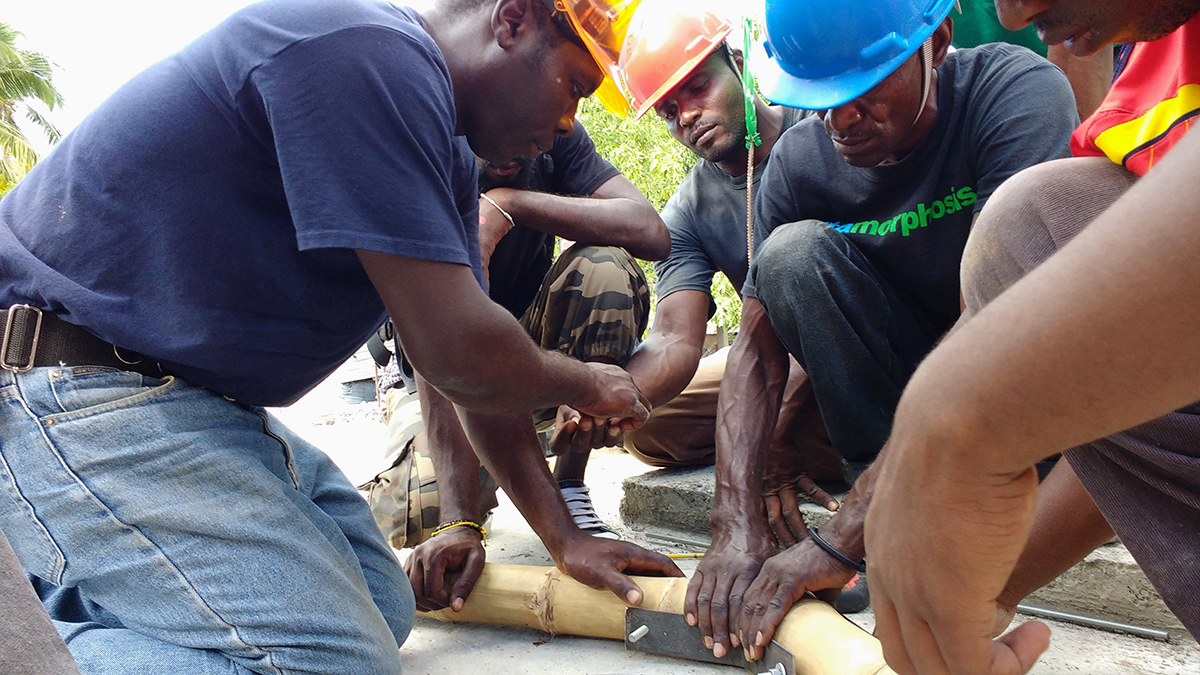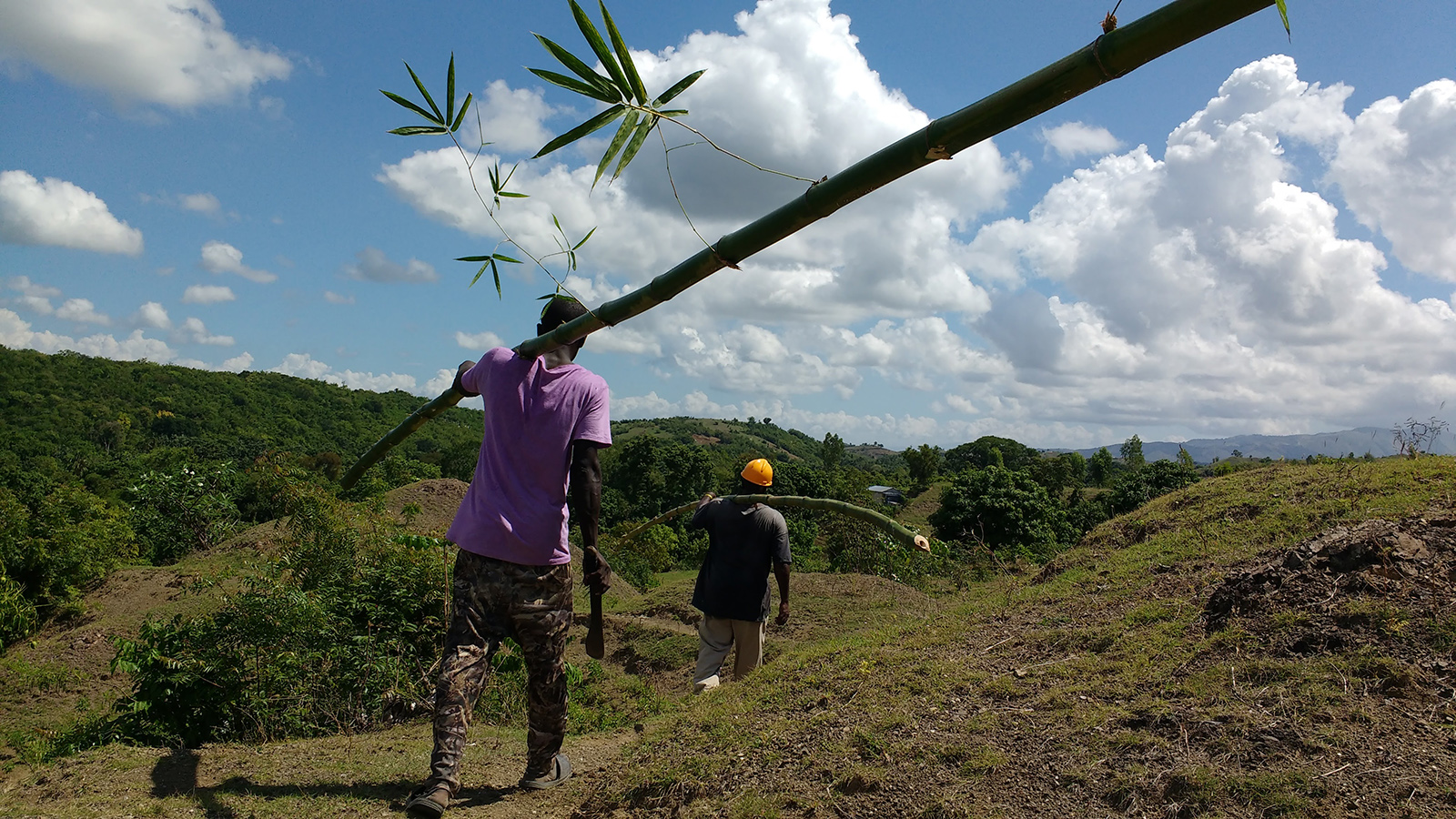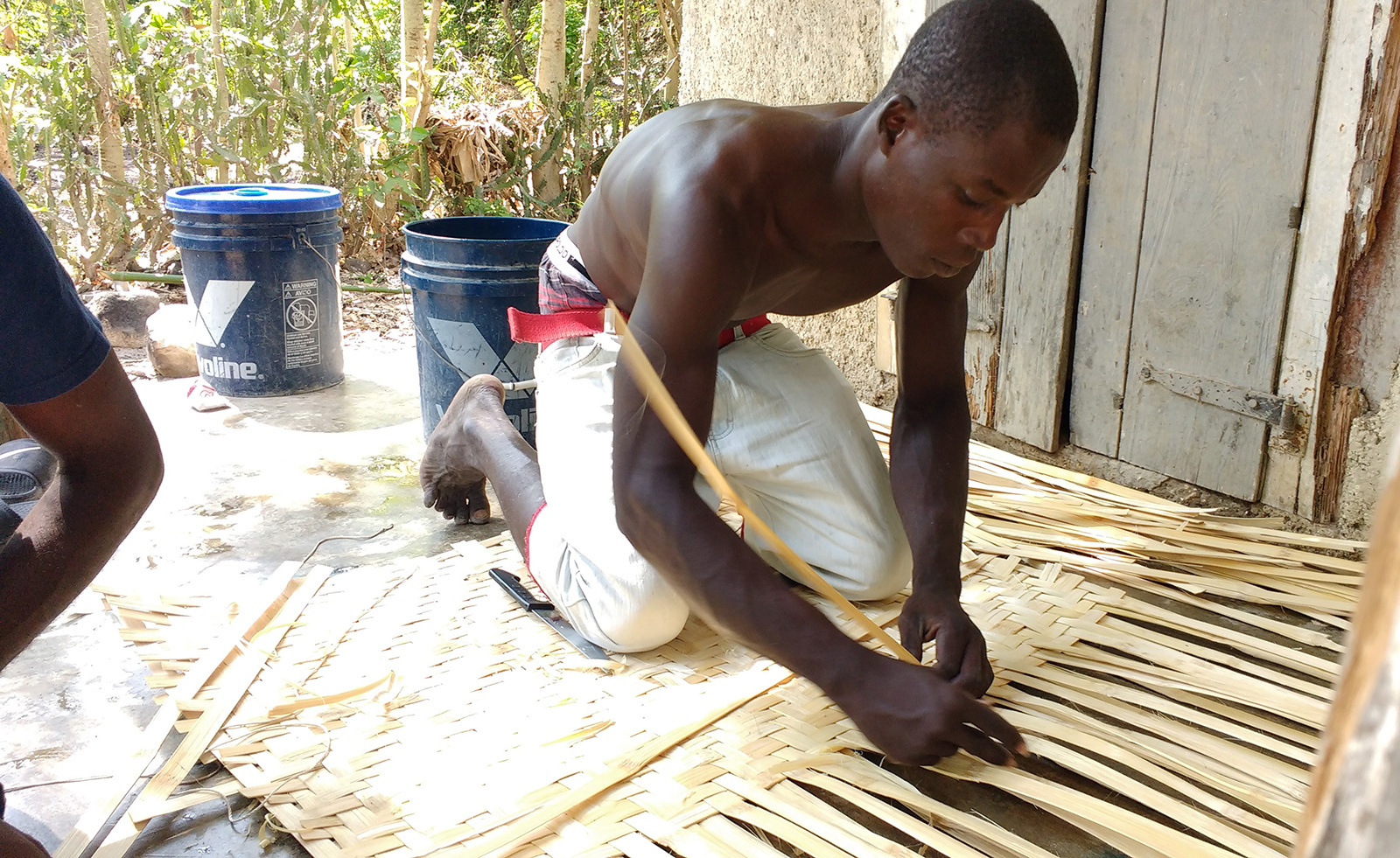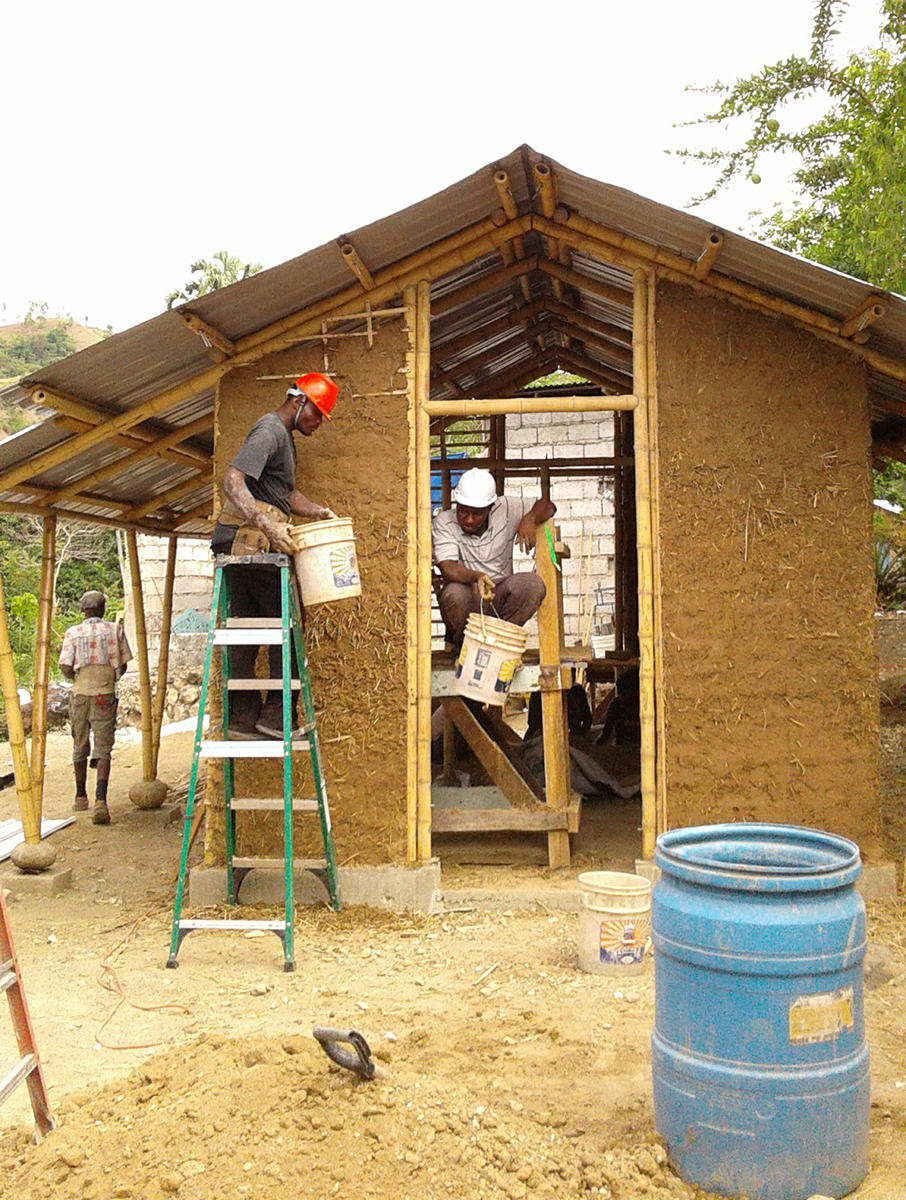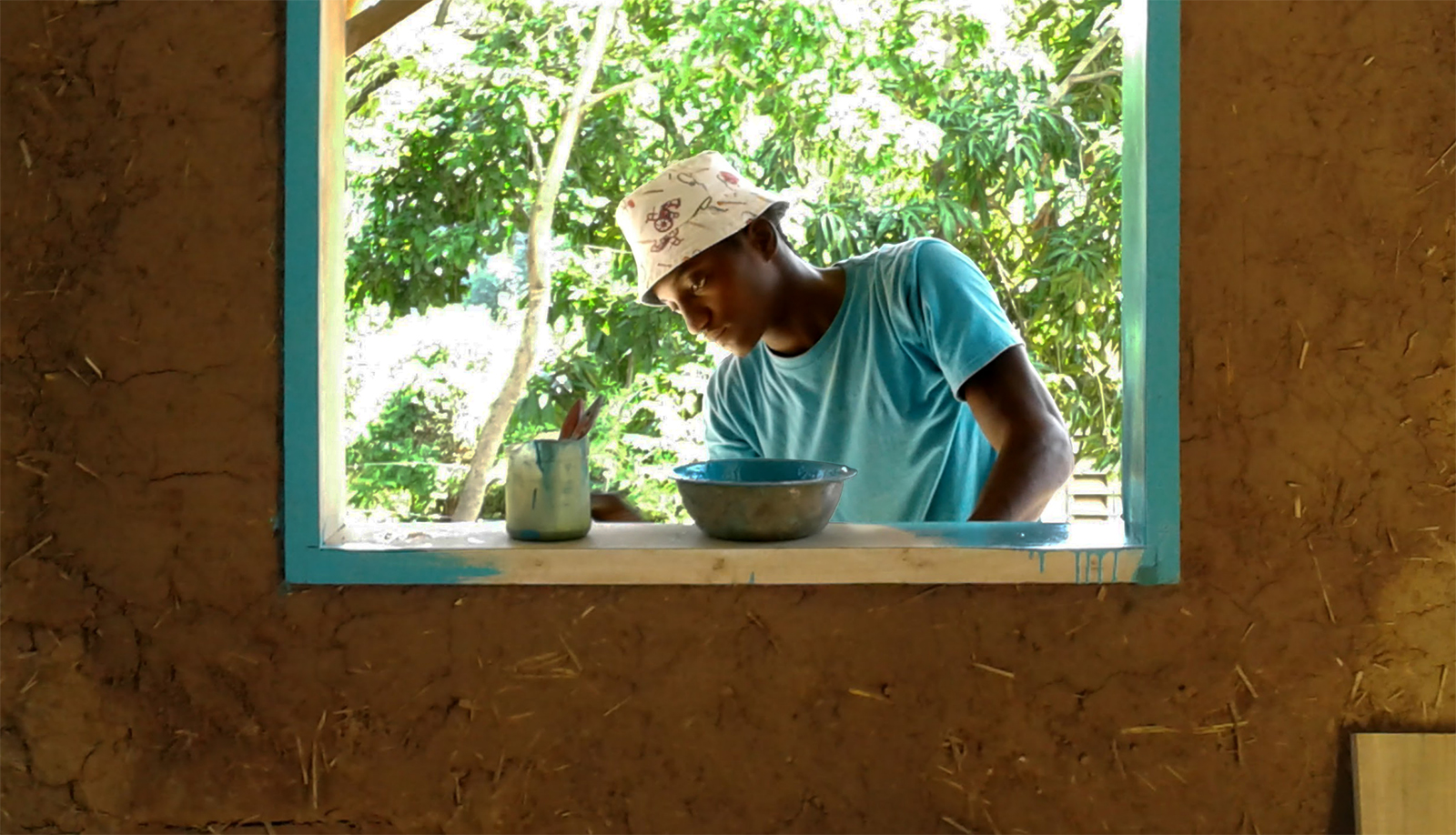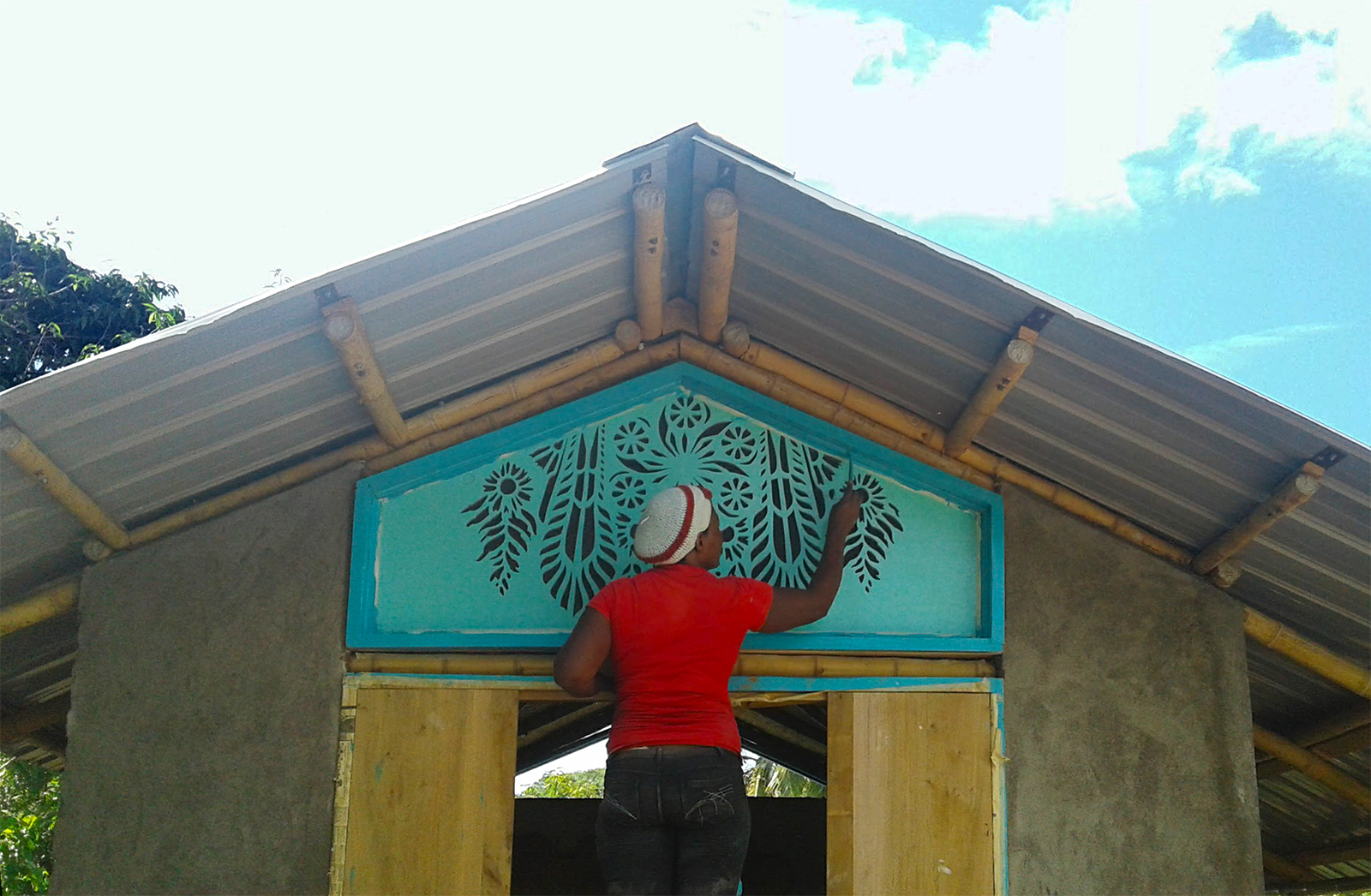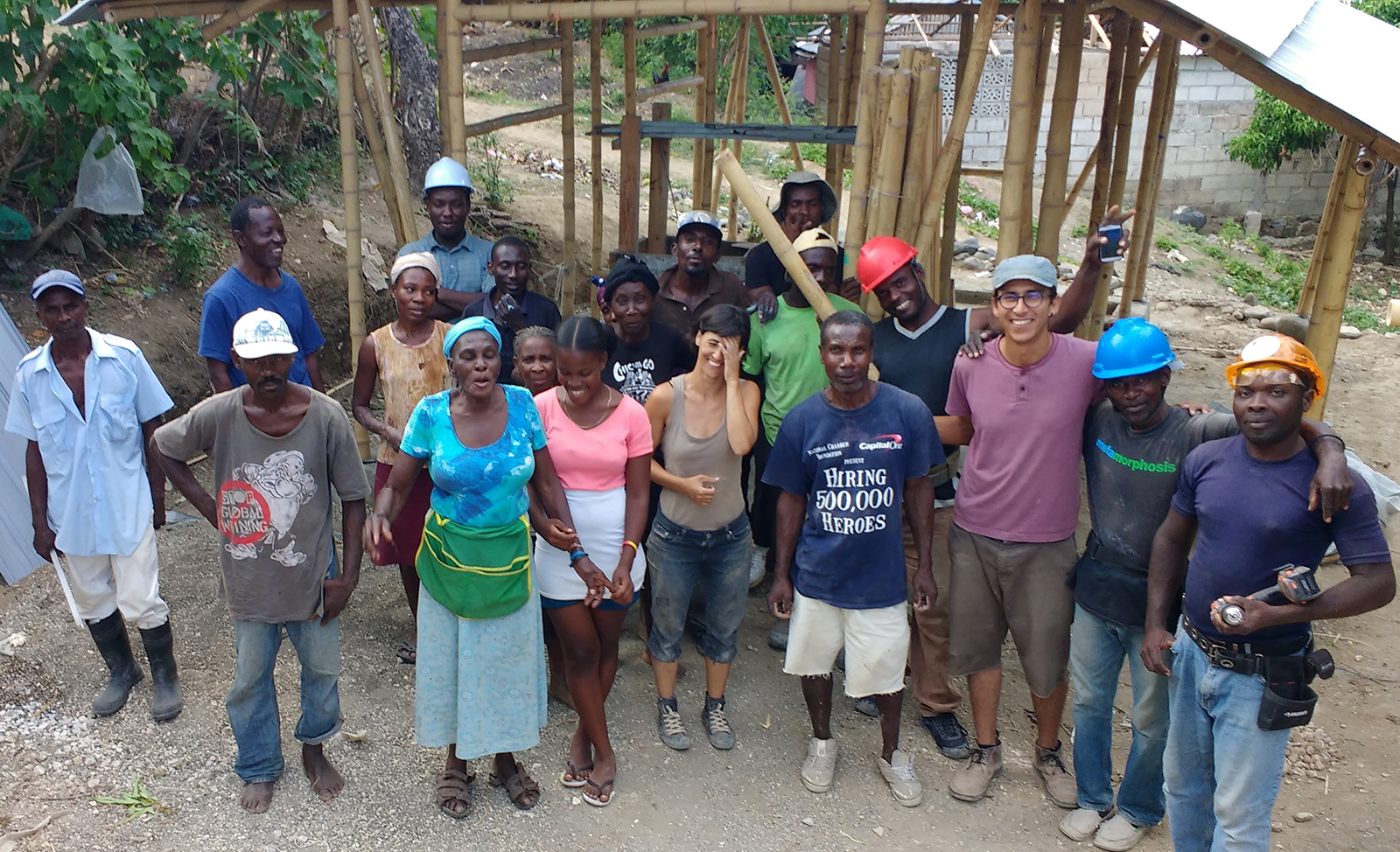House Louisana
Cormiers, Haiti . 2017
Project Featured at Designboom, Cause Artist and Inhabitat
Winner of seed network award 2018 (social economical environmental design) for excellence in public interest design !
OFICINA and Heliotrope Foundation designed and built an earthquake-resistant, sustainable house in collaboration the people of cormiers, Haiti. Heliotrope foundation—led by New York artist Swoon —has been creating sustainable buildings in cormiers since the 2010 earthquake that devastated Haiti. The house is for mama Louisana and her extended family, they lost their home in the earthquake and have since been living in a shelter intended to be temporary. House Louisana is a communal work of art and architecture—every aspect of its creation involved local people: teachers, farmers, artists, architects, and school kids. The project, built between February and May 2017, was funded by a successful kickstarter campaign done in close collaboration with the strong spirited artists of Cormiers. Gifts for donors in the kickstarter campaign were created by these artists in collaboration with Swoon.
Design
The design, based on vernacular Haitian architecture creates a dialogue with its surroundings with elements like double-pitched roofs, front porches and plenty of outdoor spaces for circulation. The central patio connects three separate rooms for living, sleeping and cooking and works as the main space for most domestic activities. The climate is tropical and the environment is rural. The house keeps temperatures cool with features such as high ceilings, long roof eaves, a reflecting roof and many doors, windows and louvers so that the air can flow indoors. Cormiers is a small village with no running water or electricity. OFICINA implemented low-tech, low maintenance and low cost solutions to harvest rainwater and use natural light; these solutions were taught to the crew of local builders and can be easily replicated by the local community
Construction
OFICINA led the on-site construction of House Louisana with the invaluable assistance of architect Octavio Lopez and 3 local experts - Robinson Michelot, Jean Eli Sanon, and Guypson Sanon. Each week—during the three month that took to build the house—we assembled a construction crew by hiring an average of 20 local skilled and unskilled workers in rotation shifts. Unemployment rates in Haiti are over 40%, with higher numbers in rural areas. The rotation system brought much needed income to the community: we employed more than 200 locals during construction and we used mostly local materials.
The construction site served as a joint learning place, both for the crew and for us. We encouraged design and building ideas from our crew members, and we met to discuss construction problems in brainstorming sessions every day. OFICINA taught techniques such as bamboo construction and wattle and daub; the local crew members now have these skills and can use them to build for themselves and for others. The building crews were diverse in sex and age. We treated all—men and women, young and old—equally, with opportunities to try new tasks and to eventually choose tasks where they felt most comfortable.
We have no words to describe how much we learned from this community in the process.
MATERIALS & SUSTAINABILITY
House Louisana used Guadua bamboo for its main structure. Bamboo is a sustainable, proven earthquake resistant material with extraordinary structural and mechanical properties. The Guadua bamboo was acquired in the country (Camp Perrin). Our Haitian team, for the first time in Haiti, treated and dried this bamboo under our guidance. Structural engineers bambuterra ensured the design follows building code regulations and guaranteed structural integrity necessary for earthquake areas
We built the walls using earth and the wattle and daub technique. This consists of a wide grid of bamboo stripes on each side of the structure; the grid sandwiches an earth mixture composed by local soil and natural fibers (shredded coconut, vetiver and bamboo). We mixed the soil by hand and feet at the sound of music and singing. Wall finishing consisted of a natural lime plaster and lime paint with pigments.
We acquired most materials locally and some were donated by locals. The doors and windows were of Haitian wood, all sand and gravel was from nearby sources and the stone—used for the outdoor floor and retaining walls—was from Cormier’s riverbed.
Vernacular haitian roofs are prone to fires and hard to maintain. We used a white corrugated metal that is fireproof, durable and reflects direct sunlight. The roof also collects rainwater for domestic use.
Oficina believes that beautiful design gives a dignifying sense of ownership. With that in mind, and taking Haitian louvers as an influence, we asked artist and Heliotrope founder Swoon to create unique patterns for the doors and window louvers, bringing uniqueness to the project. Cormiers is a village of crafters and artists. Oficina brought in artists and artisans to apply their crafting techniques into architectural elements—for example the bamboo basket makers who made custom ceiling panels that insulate heat from above.

